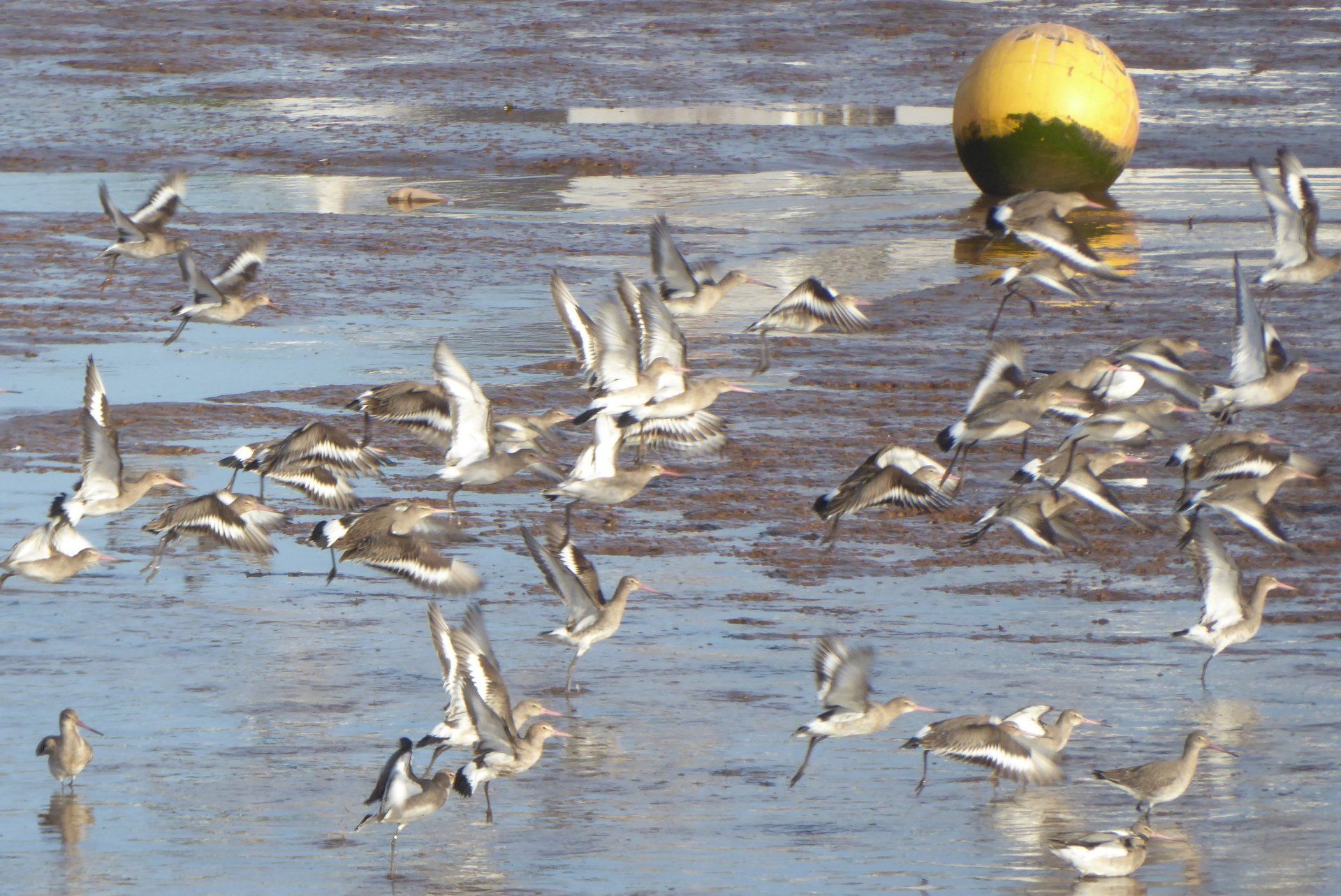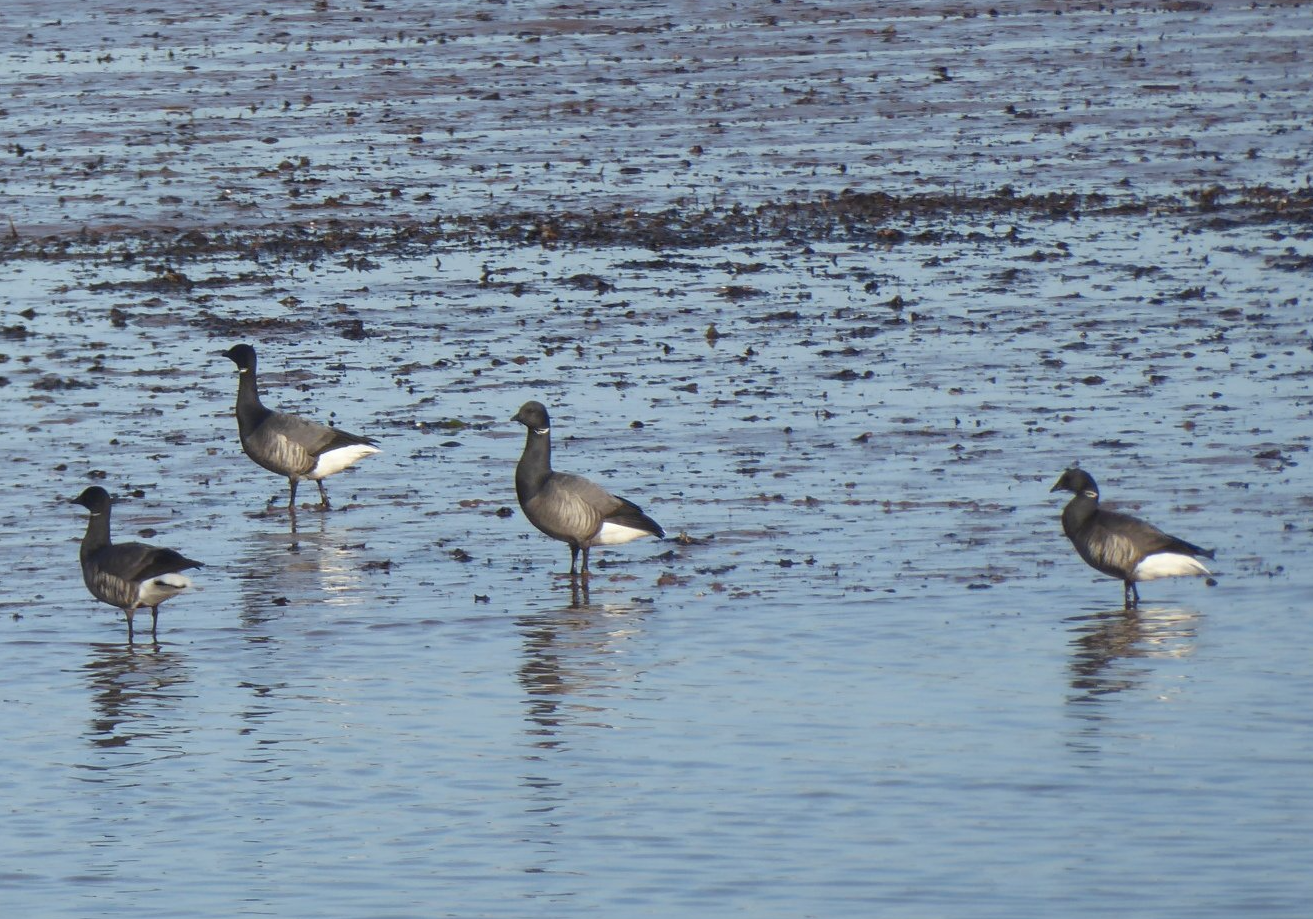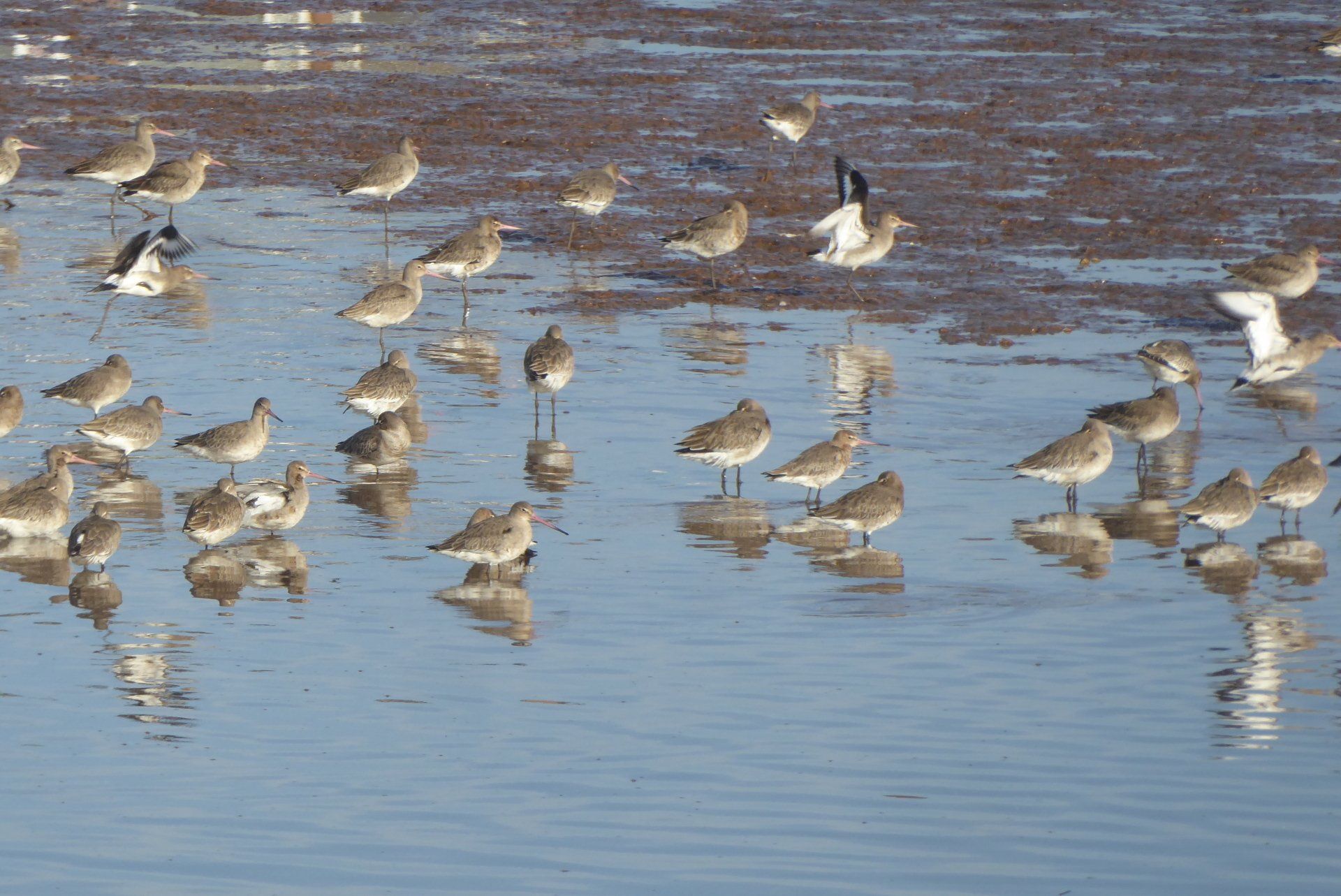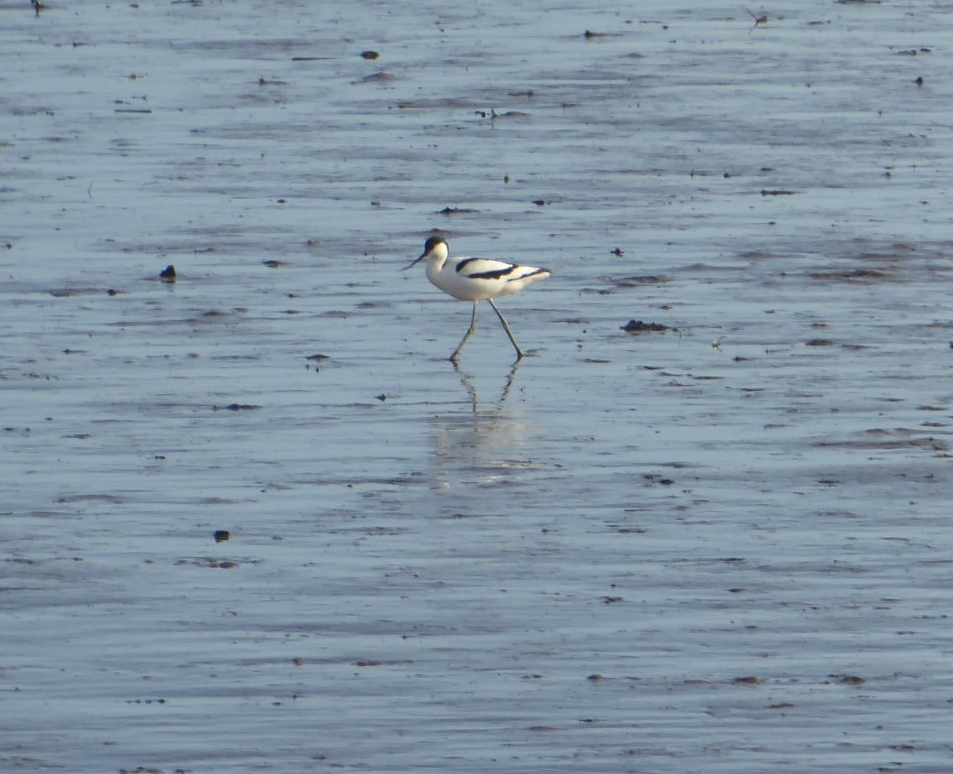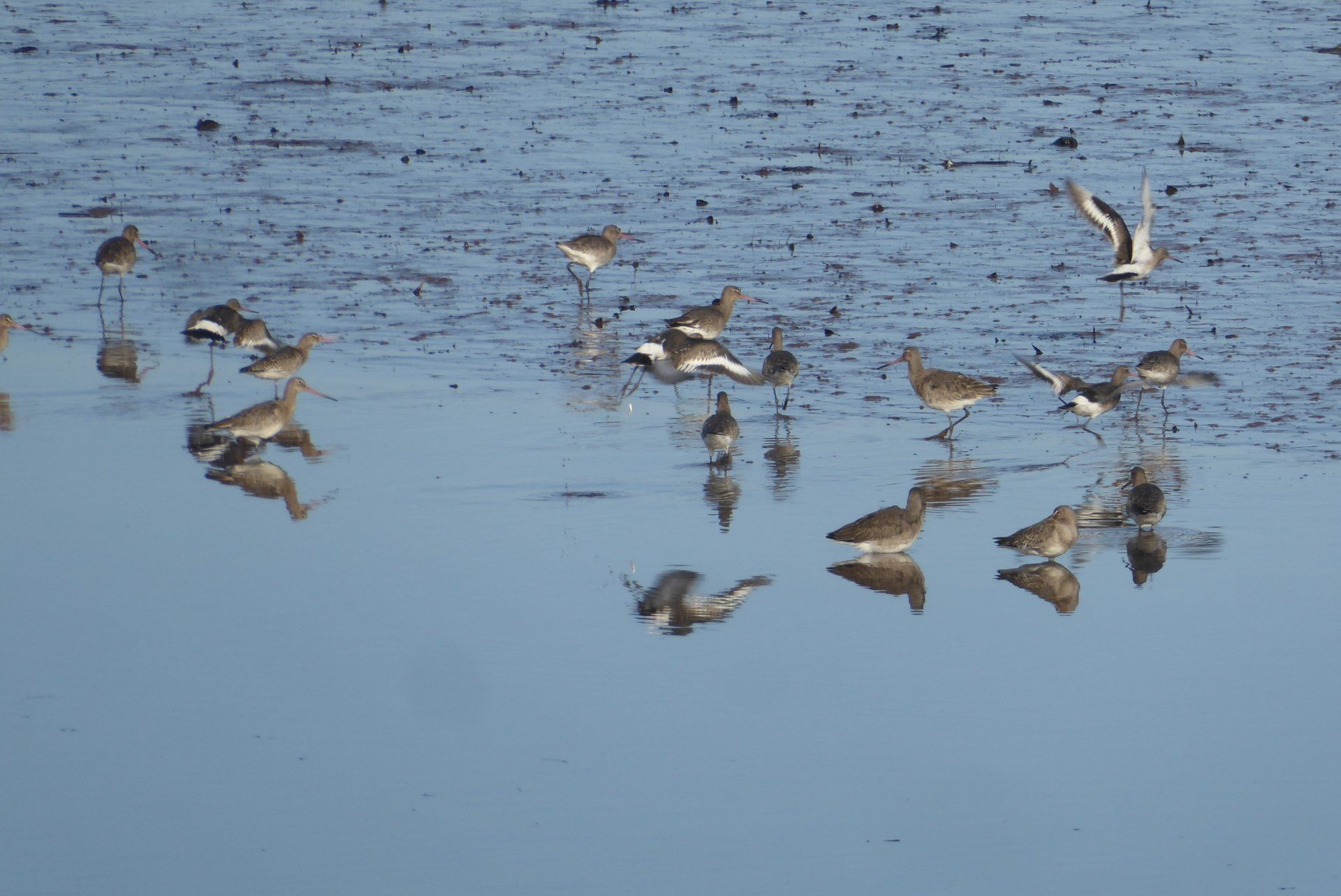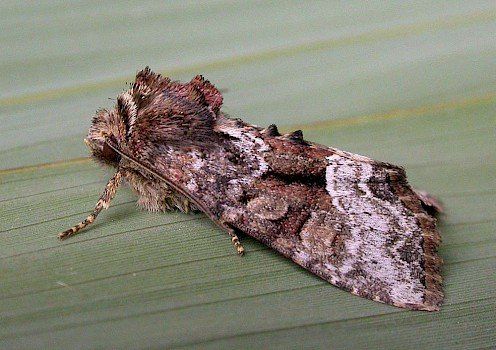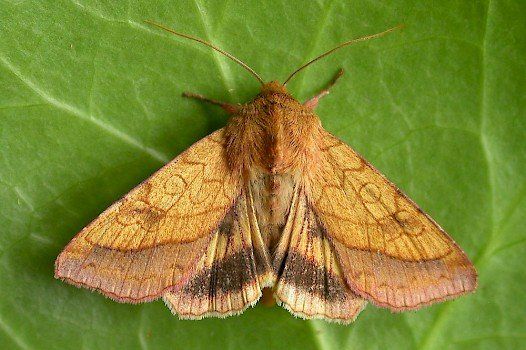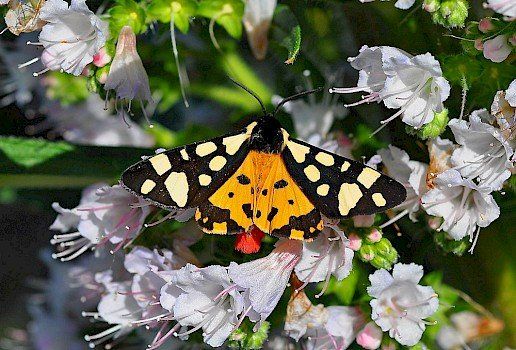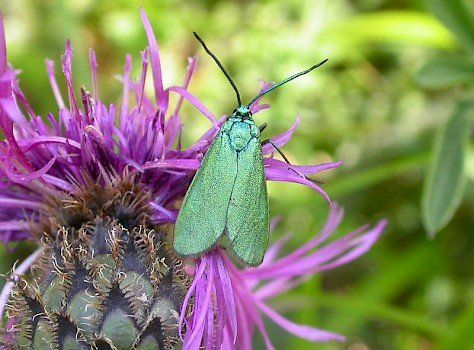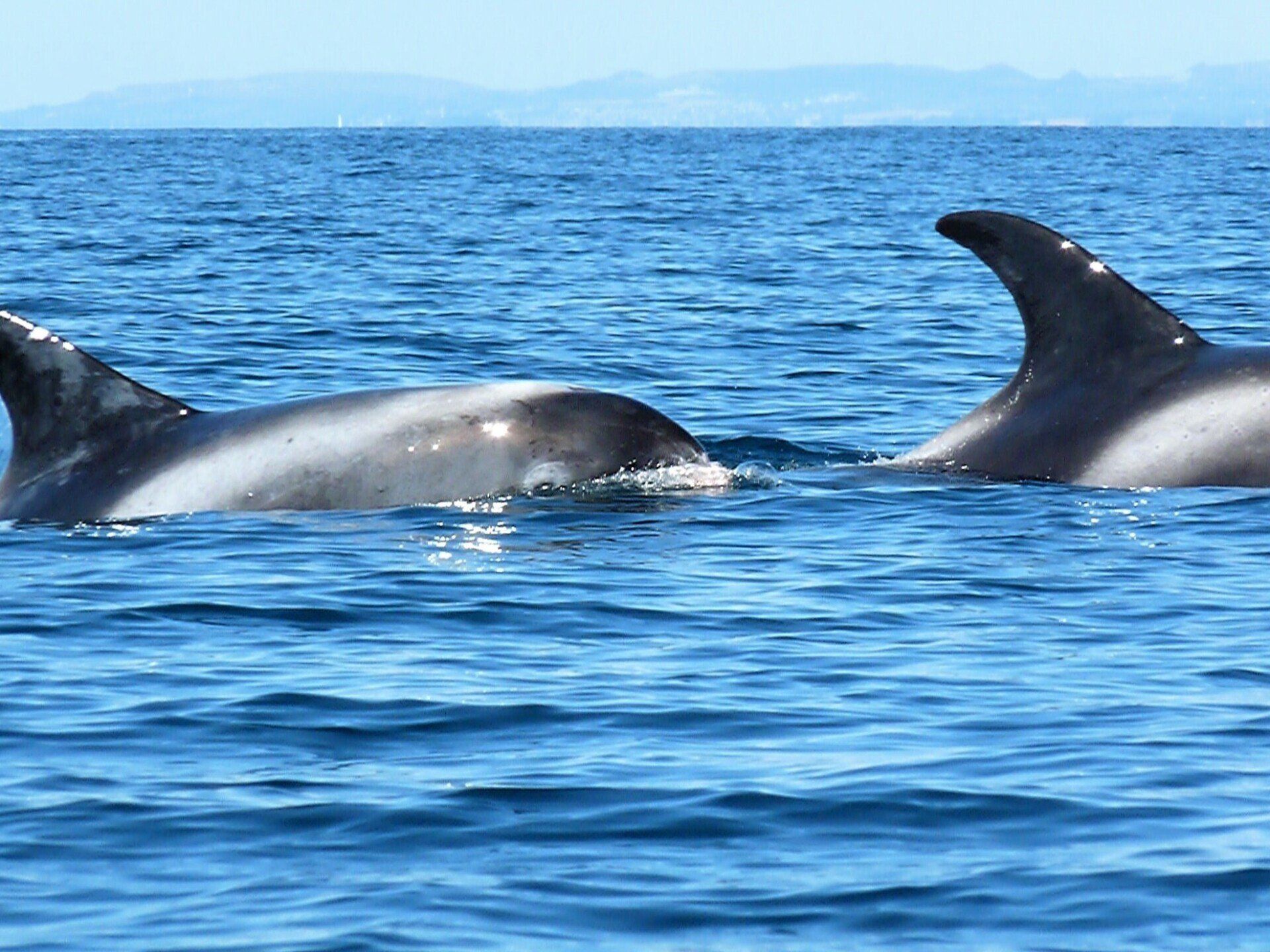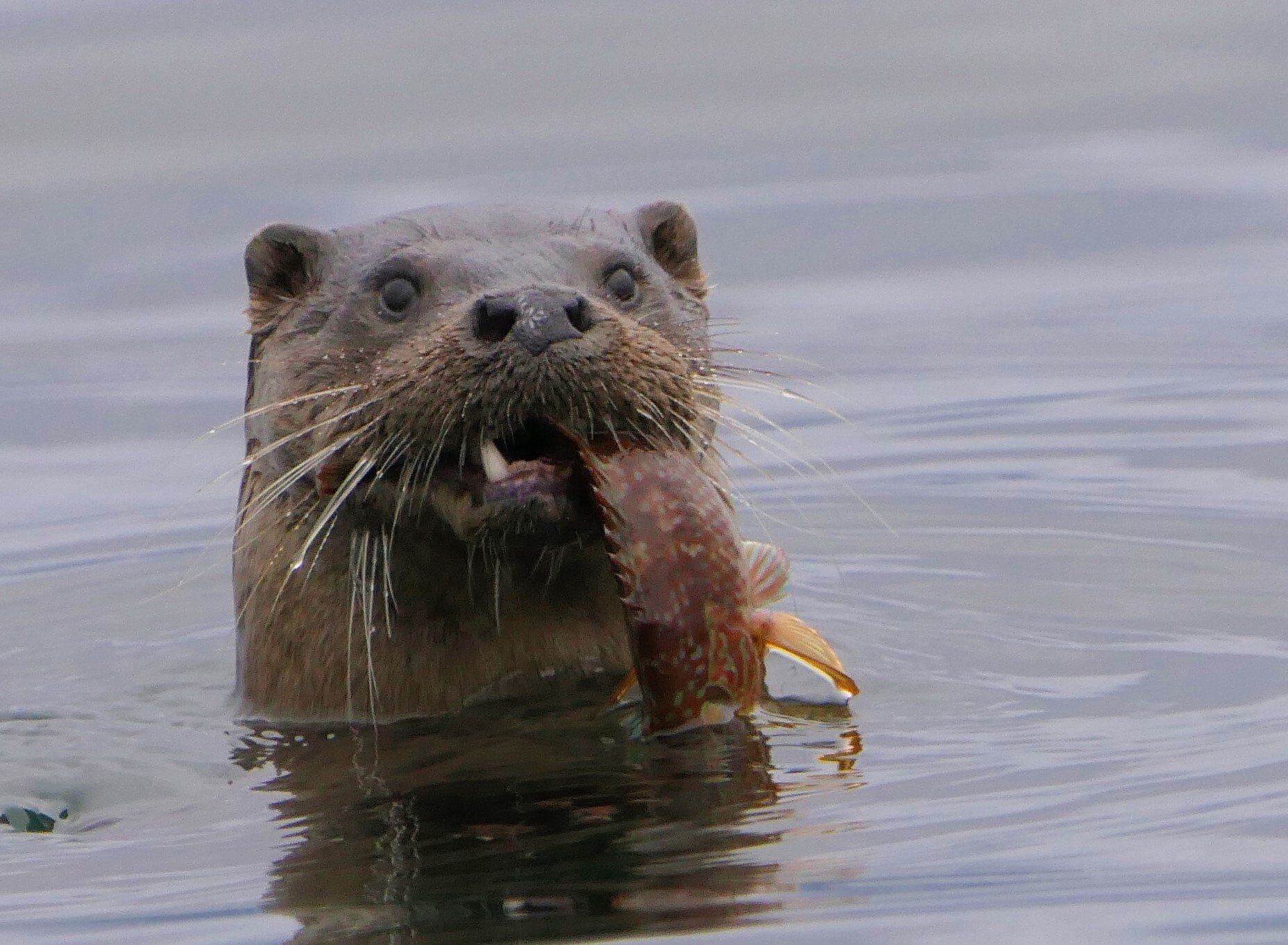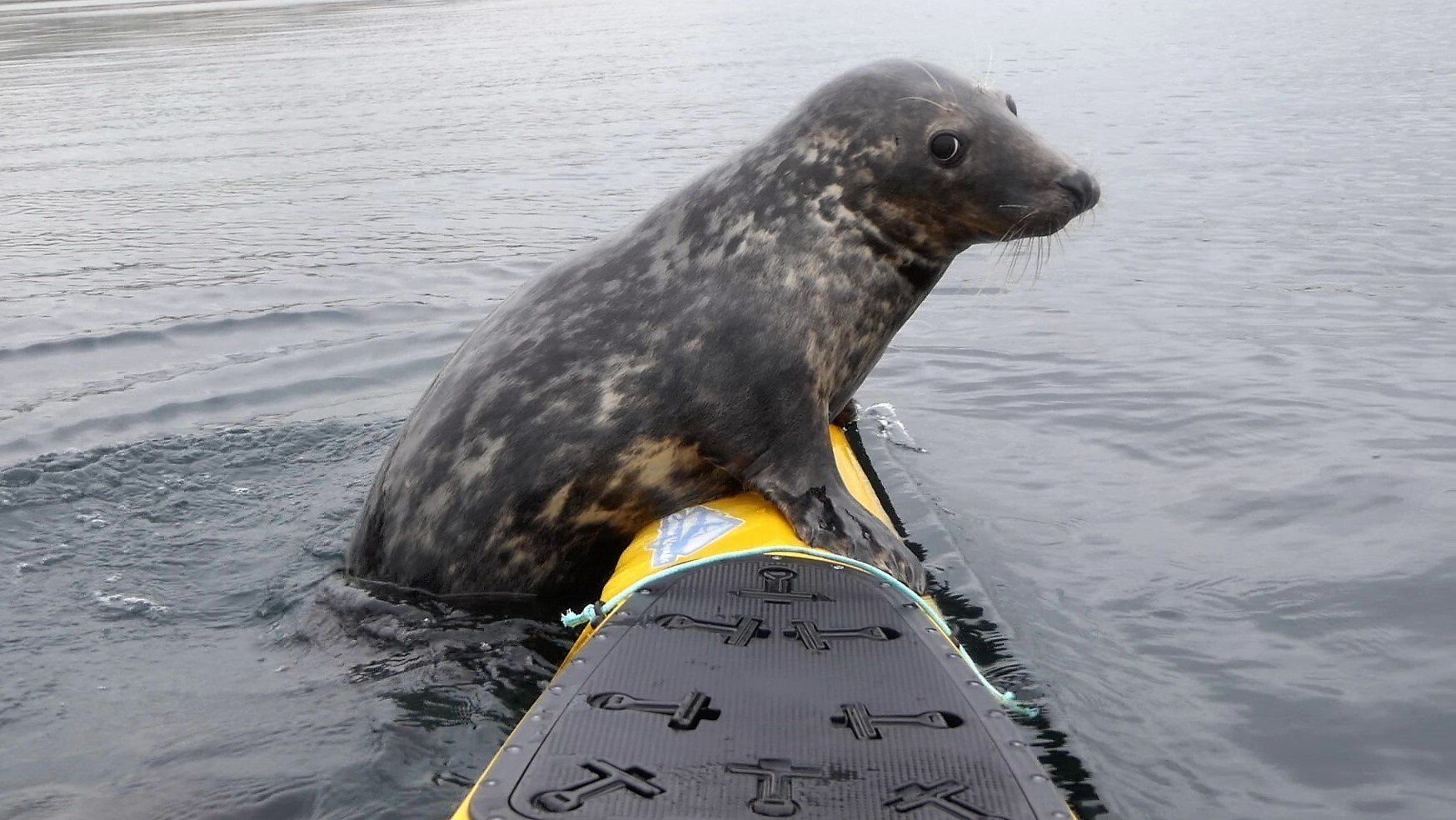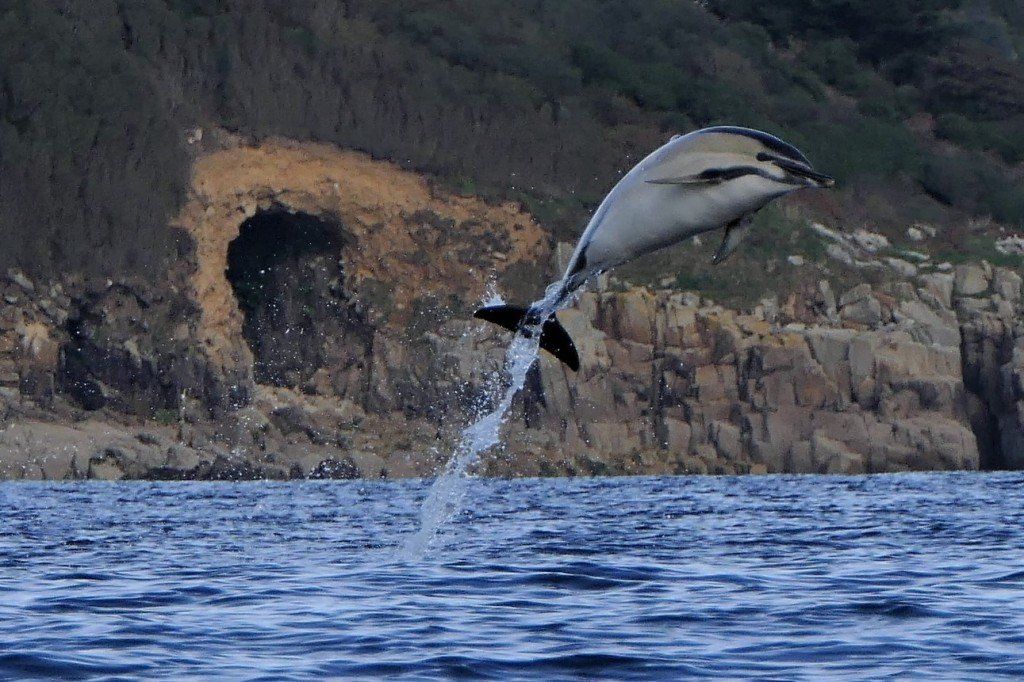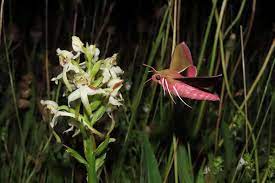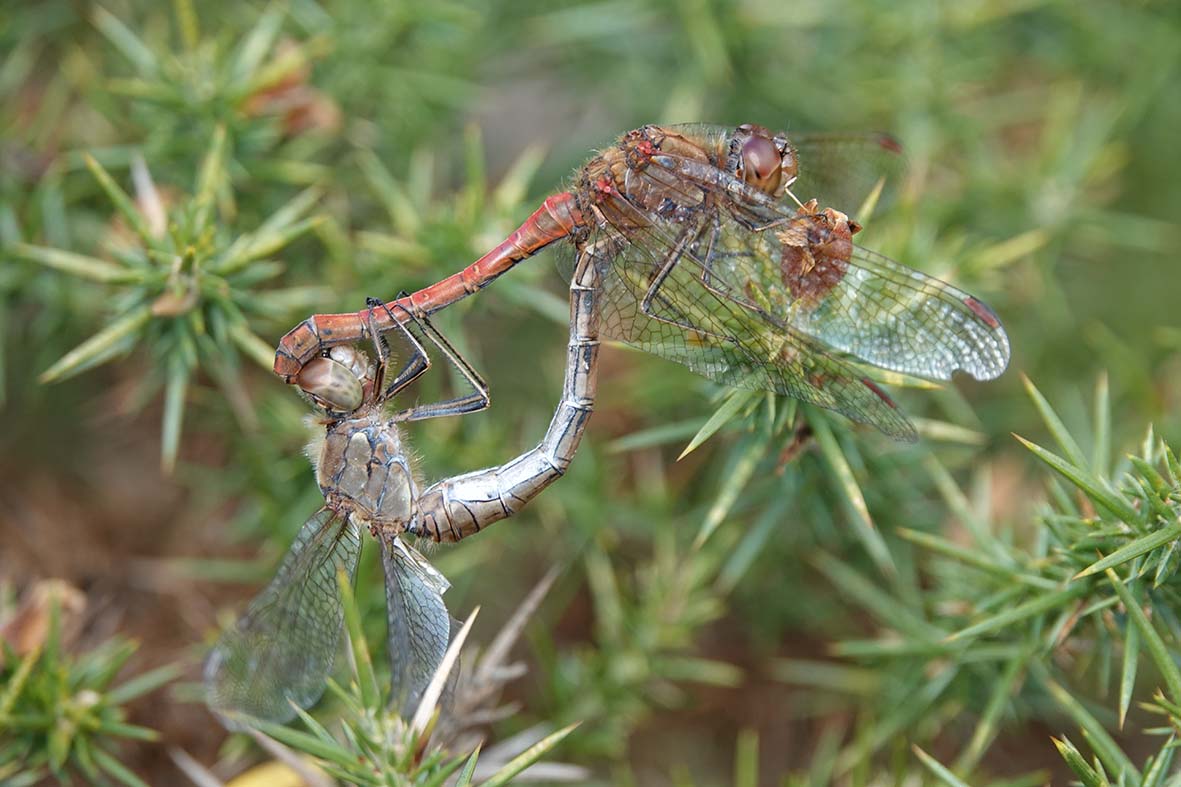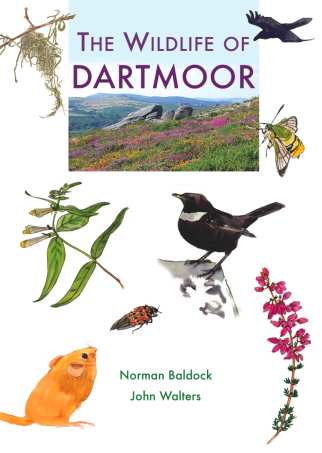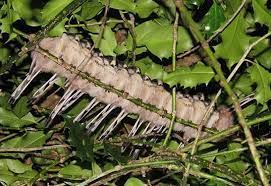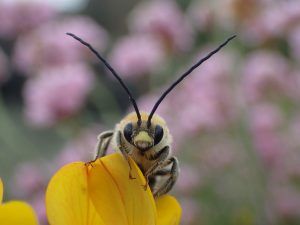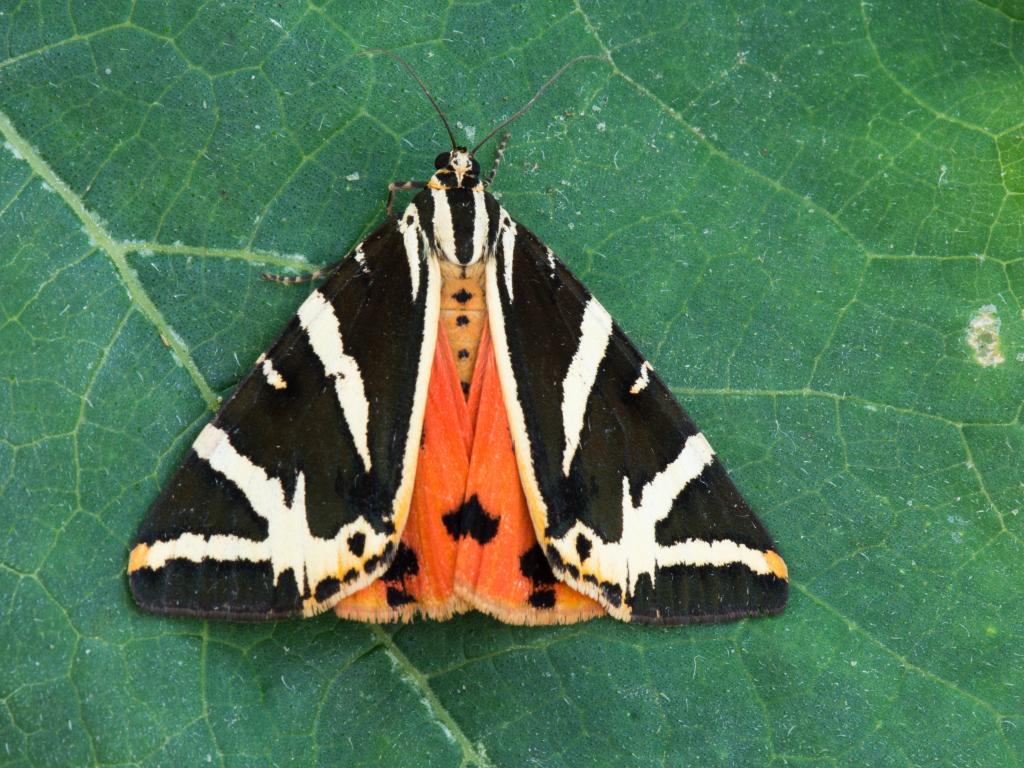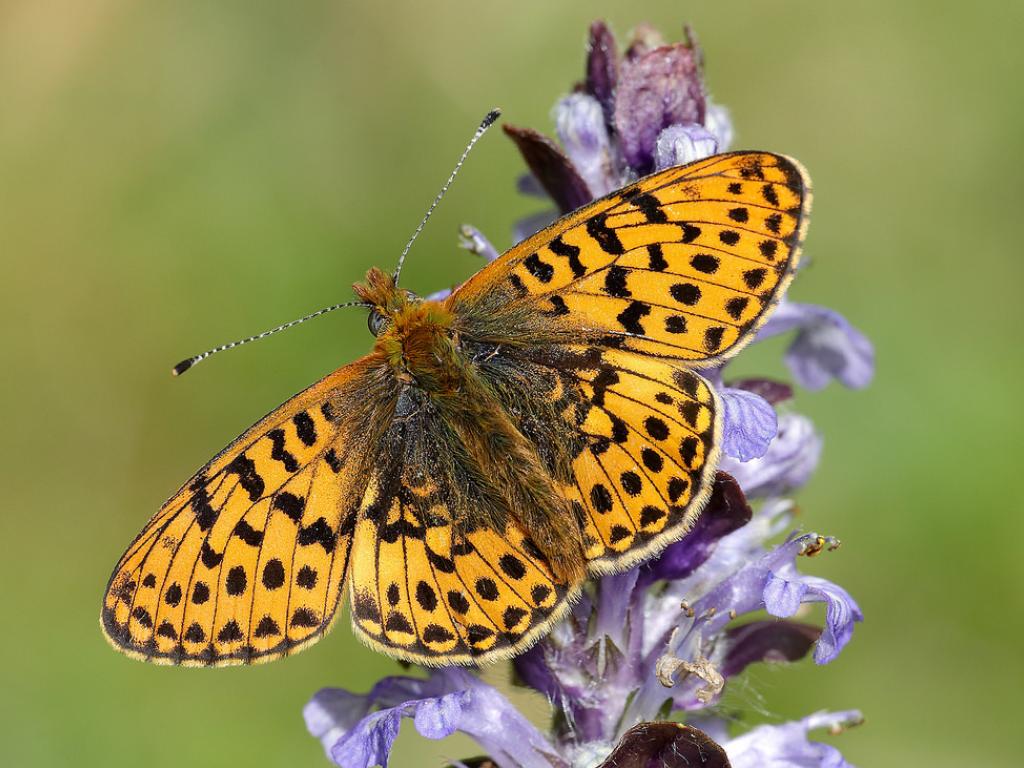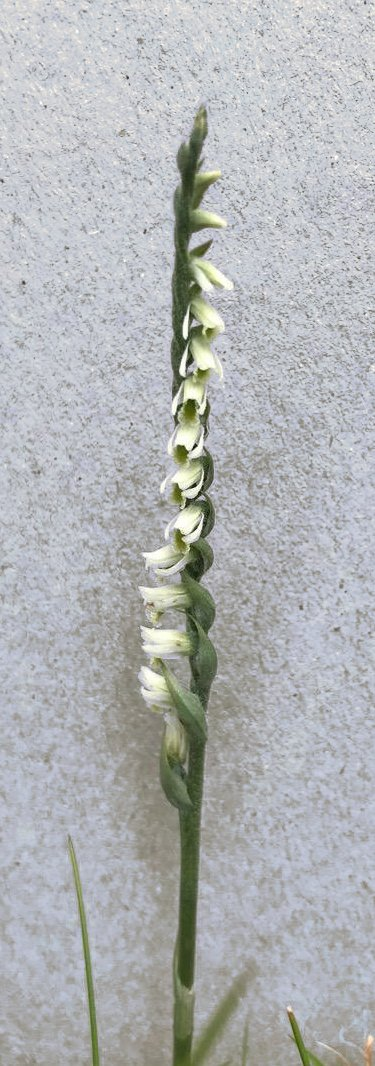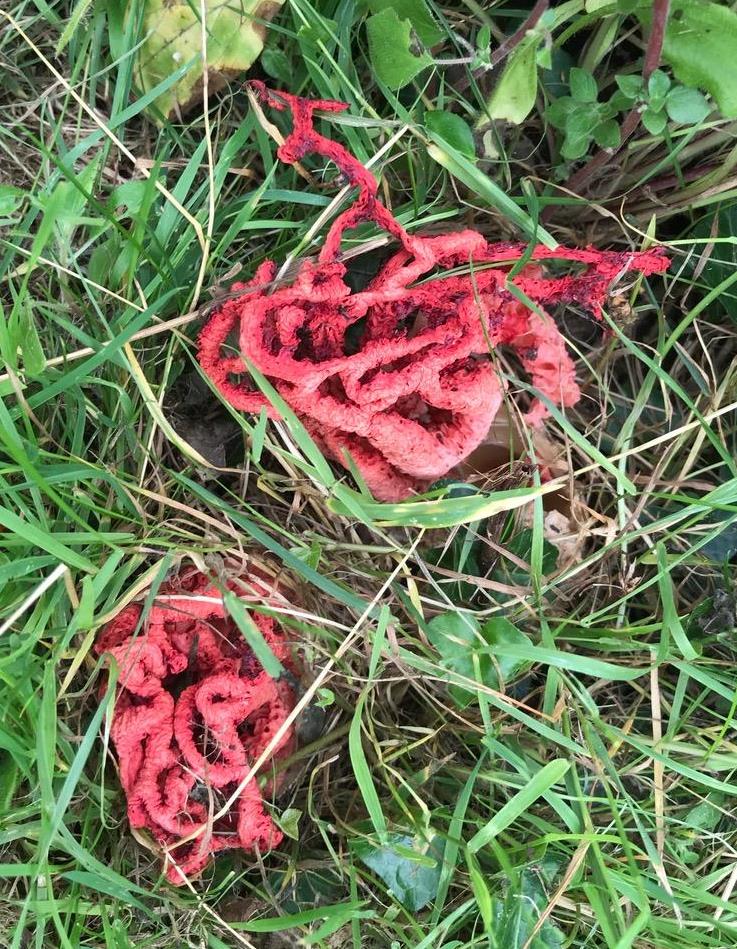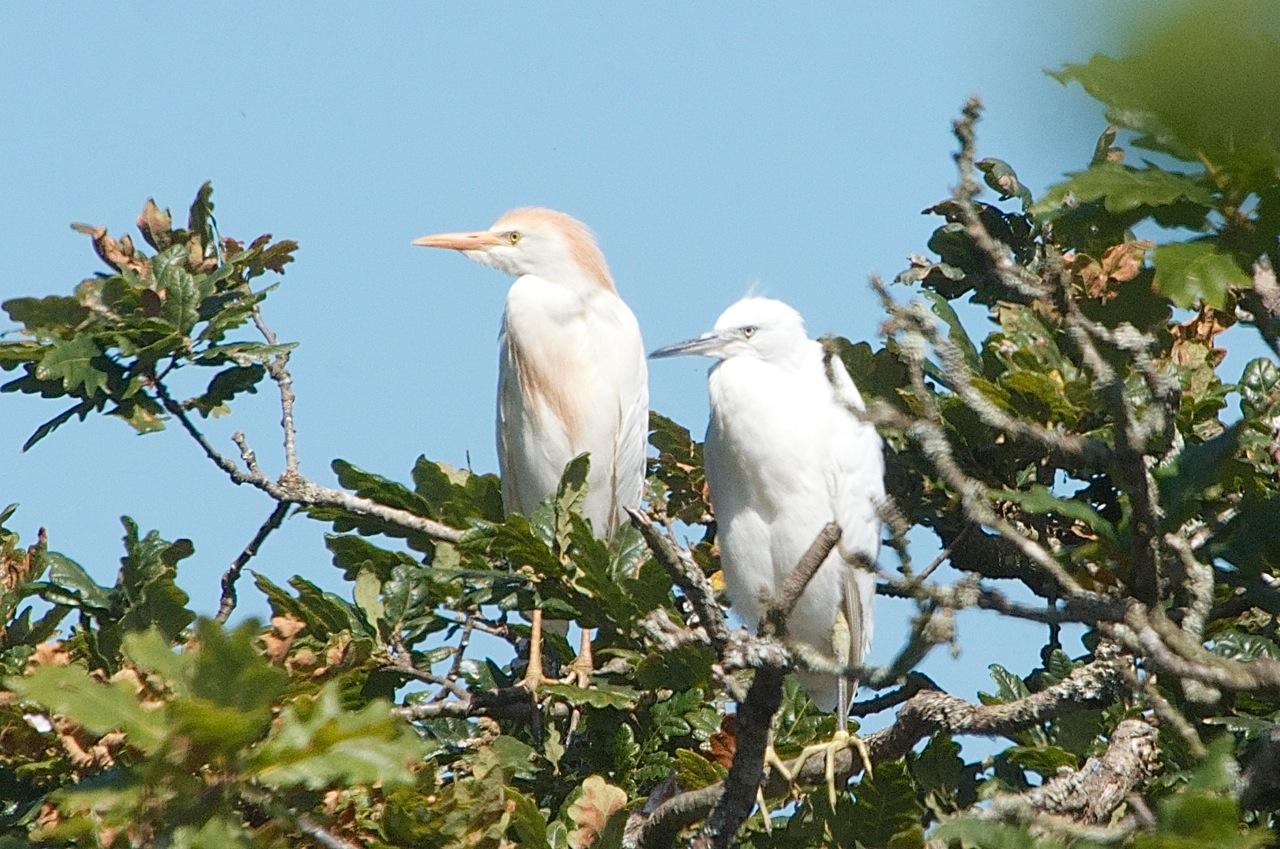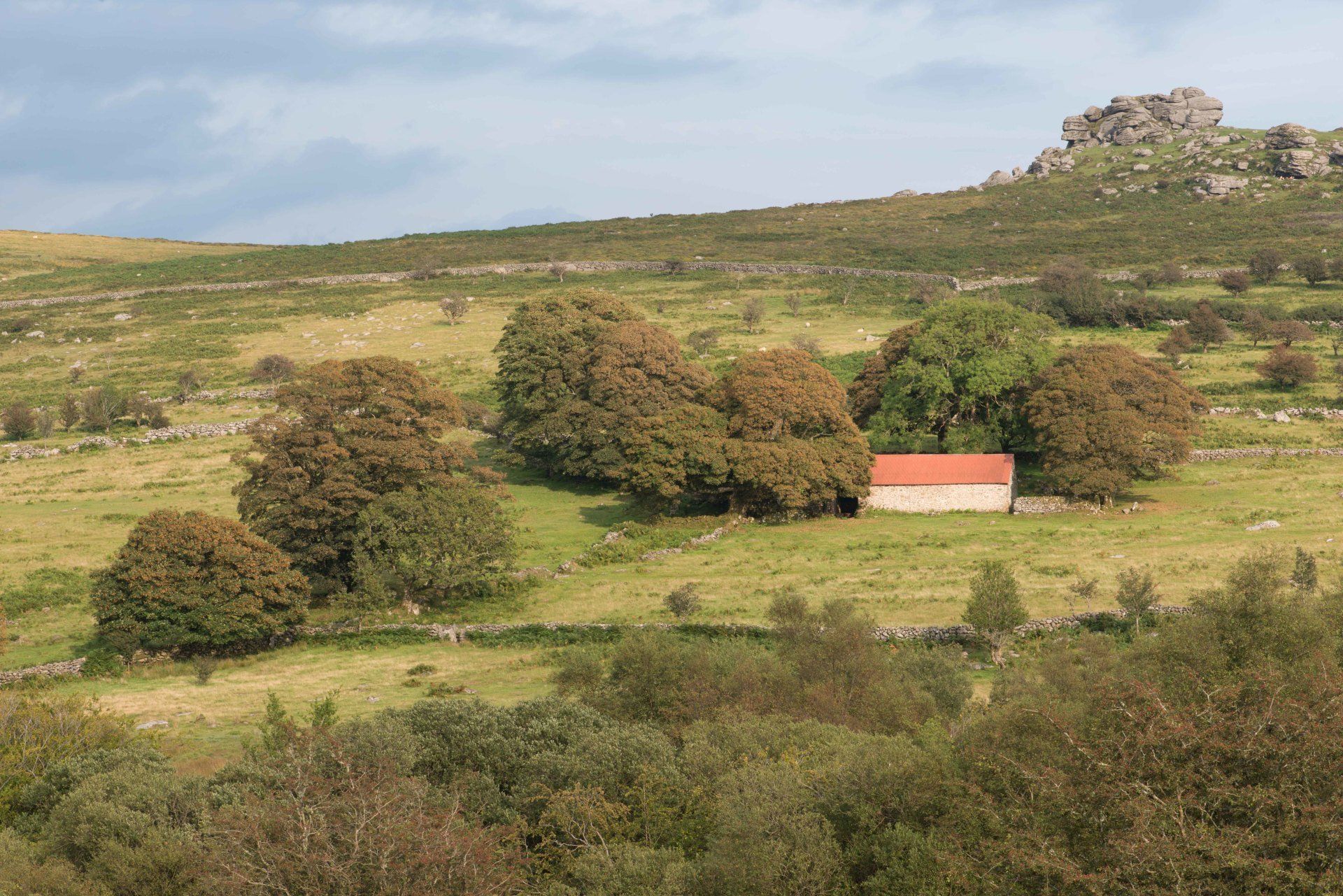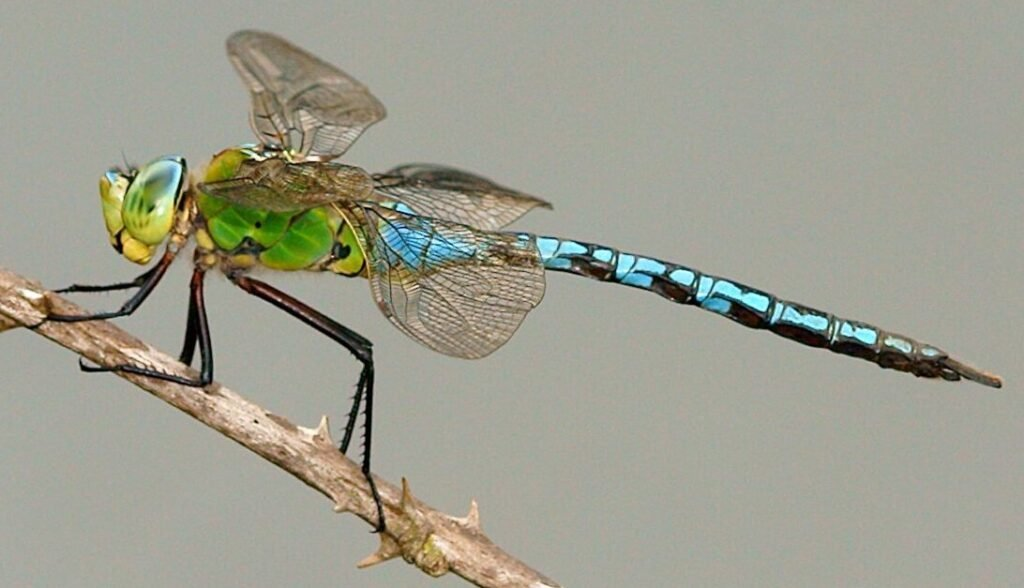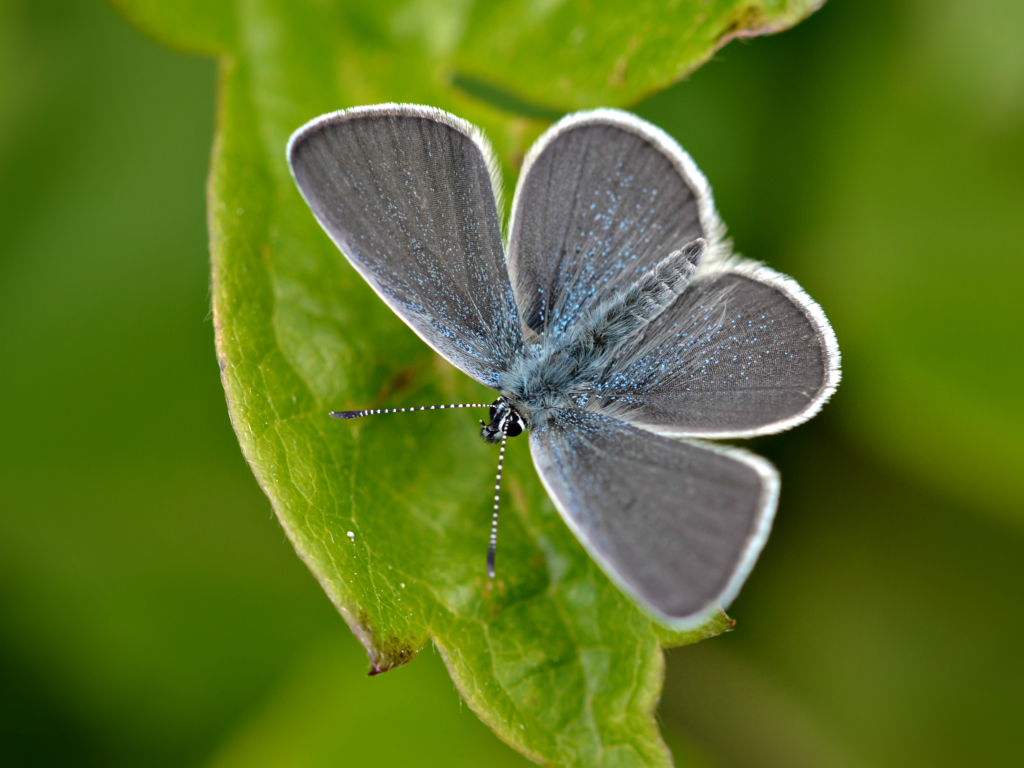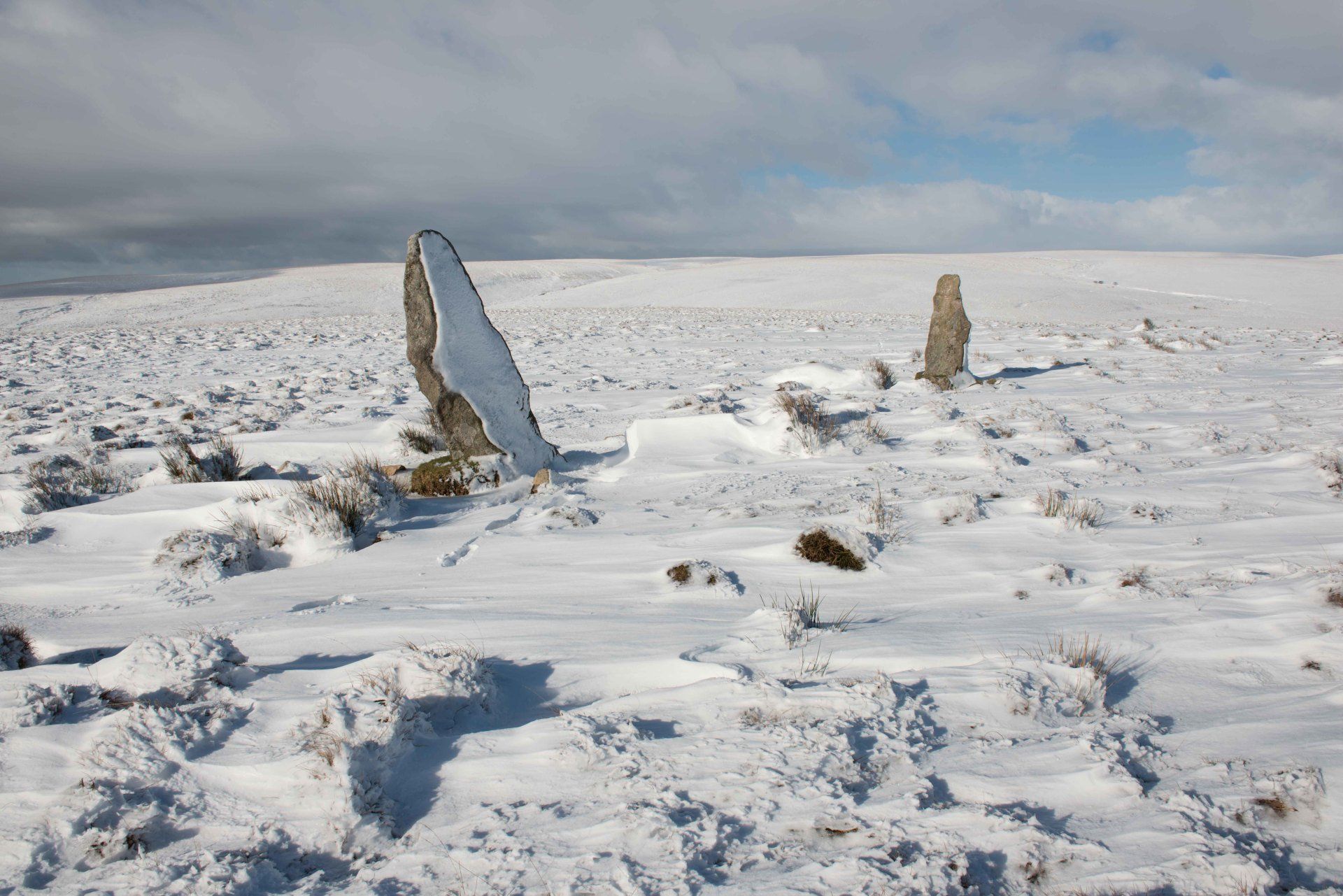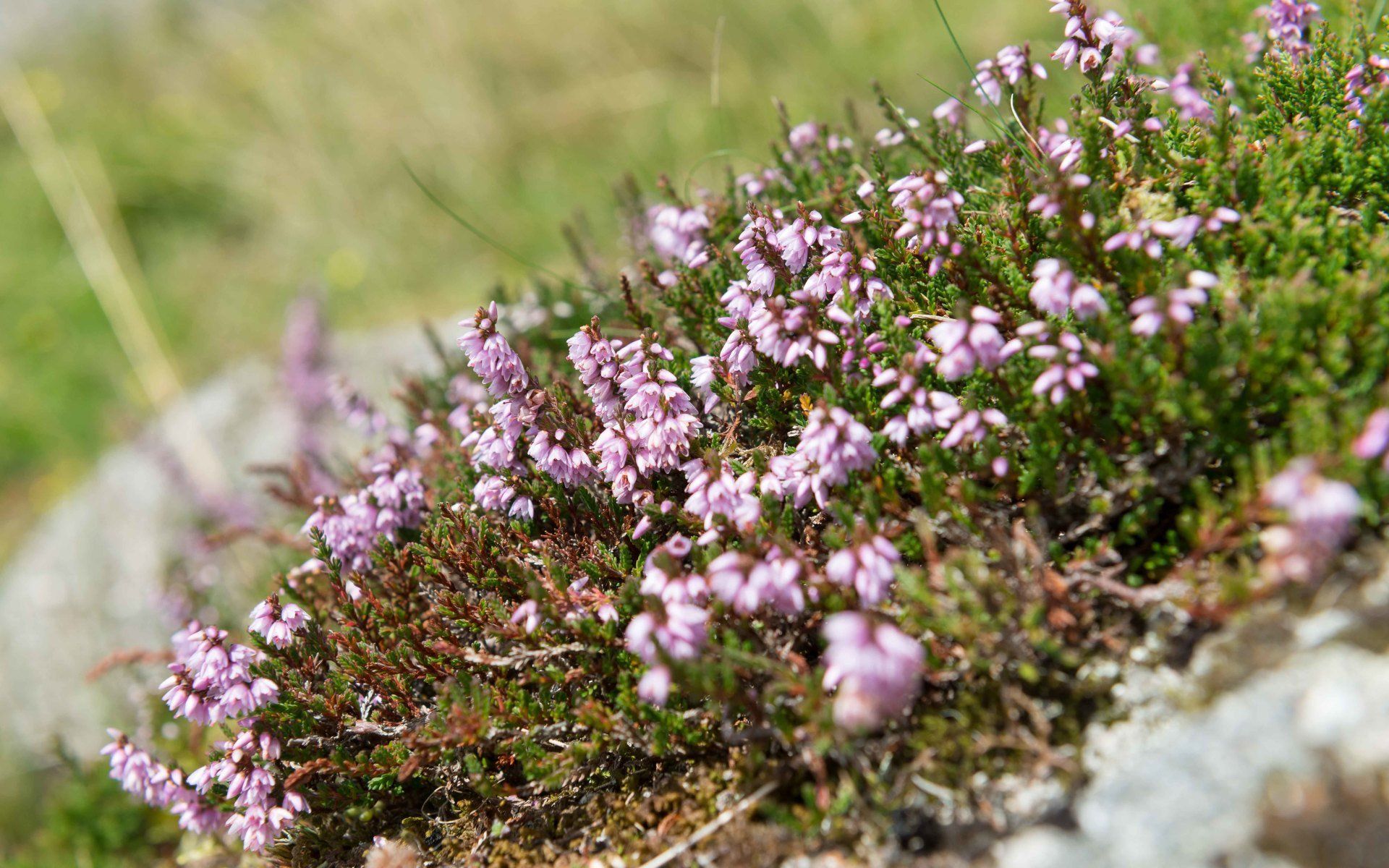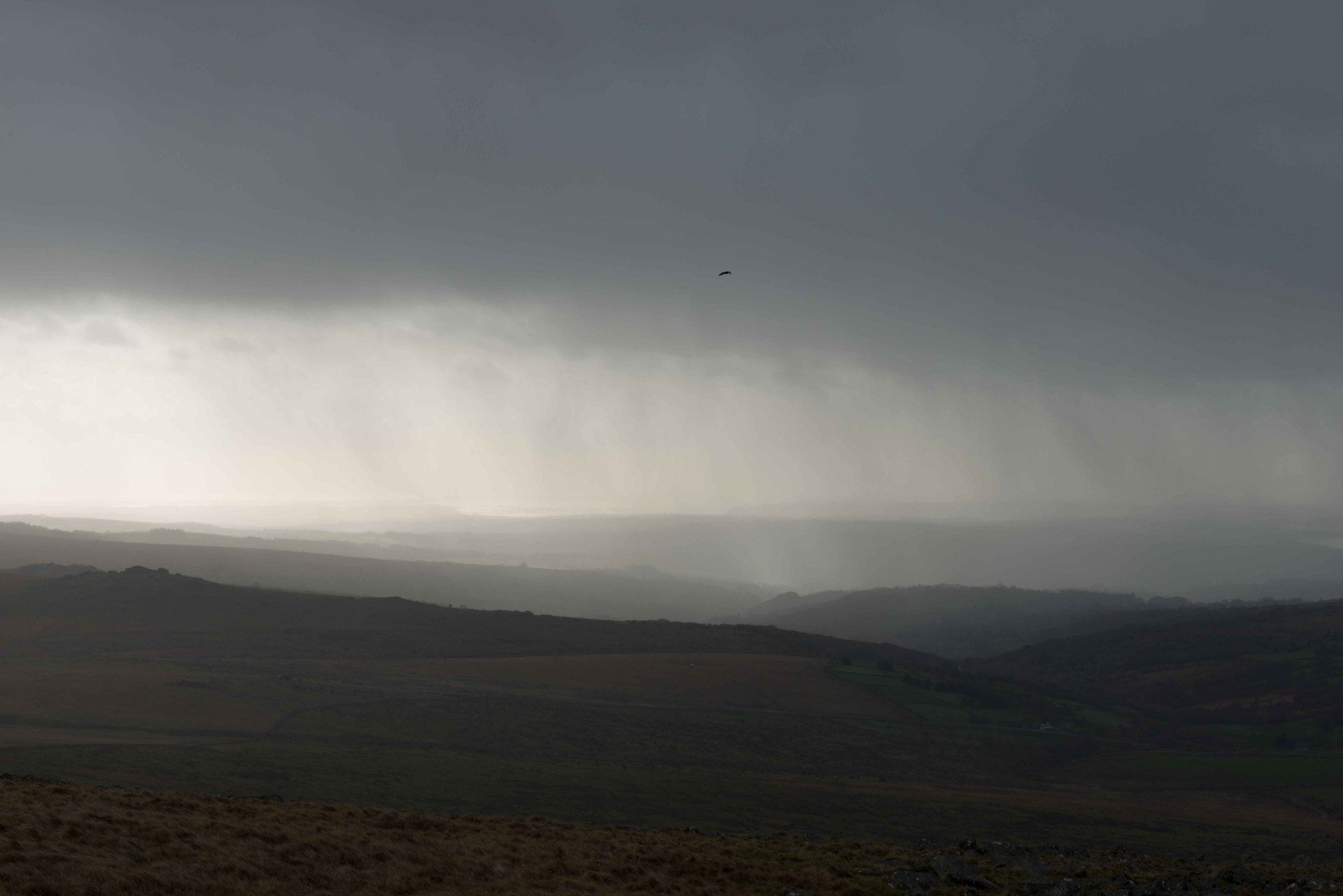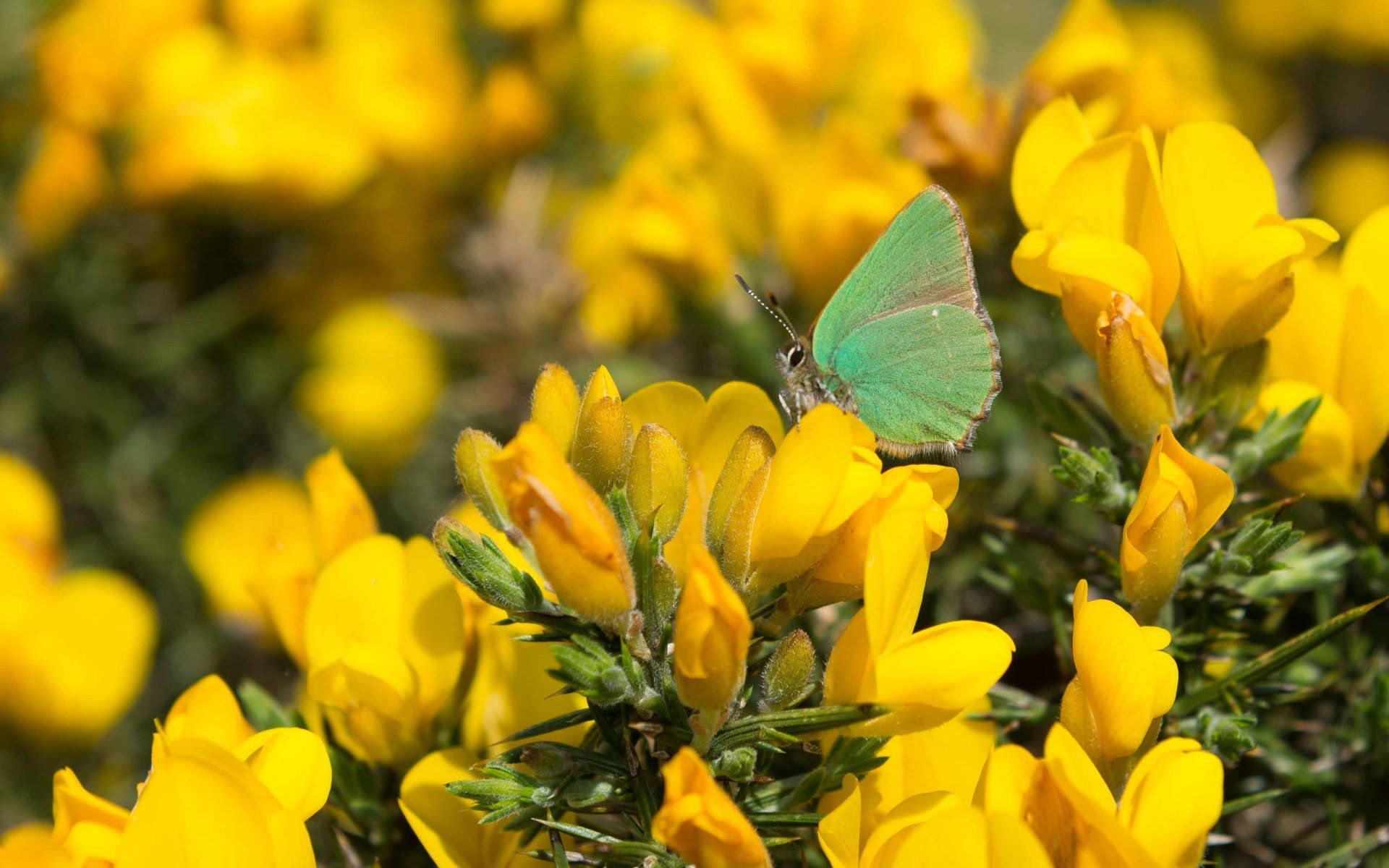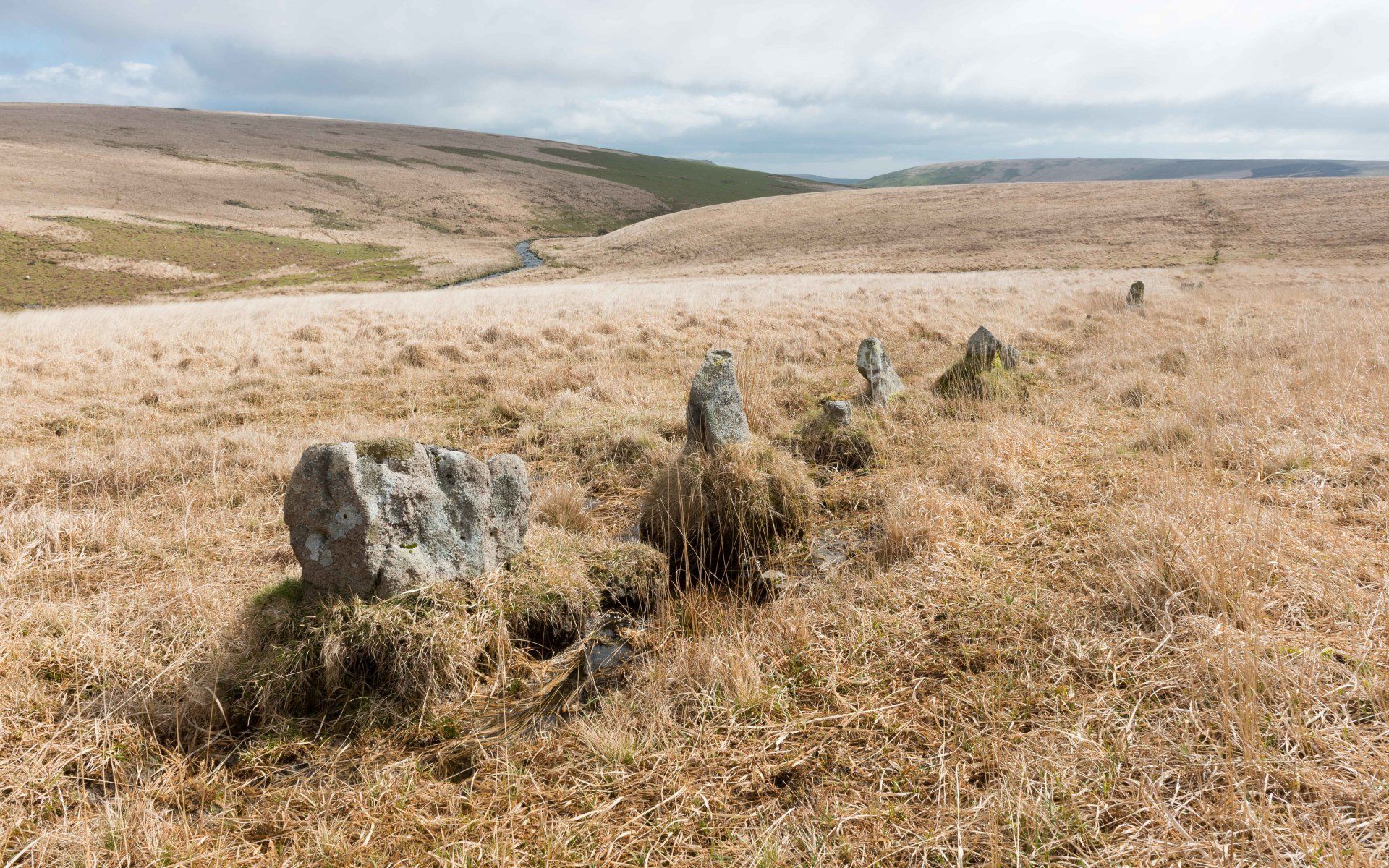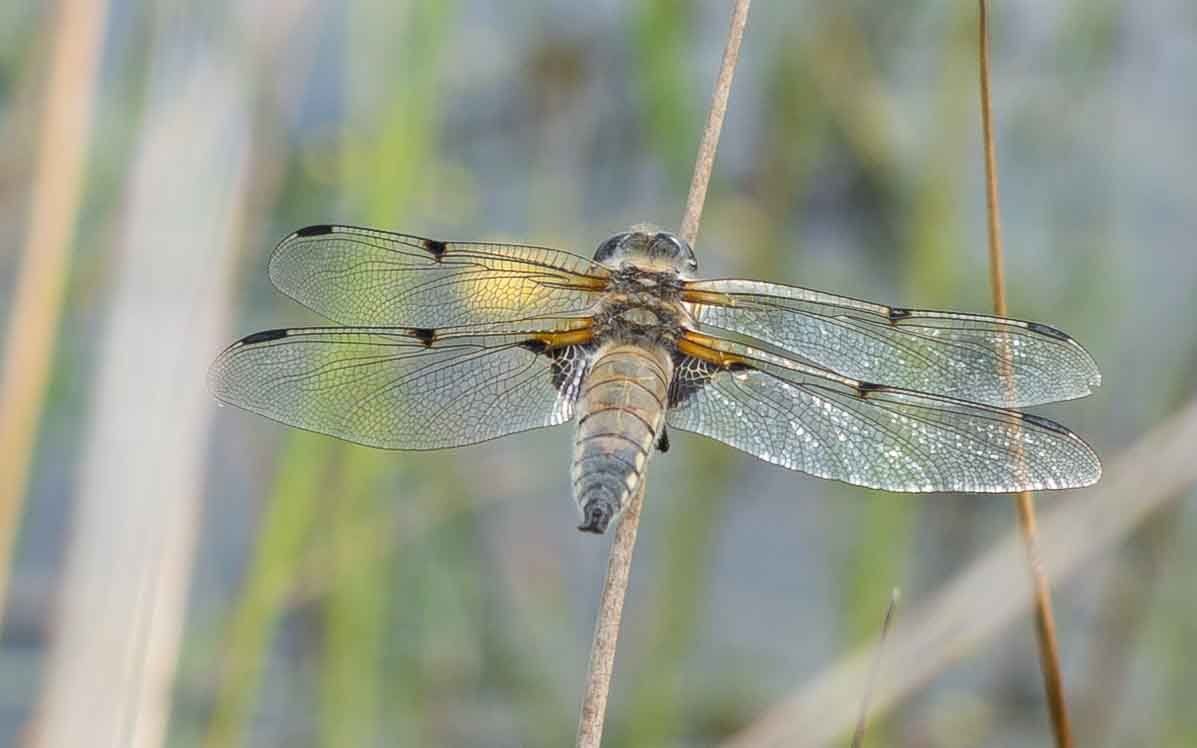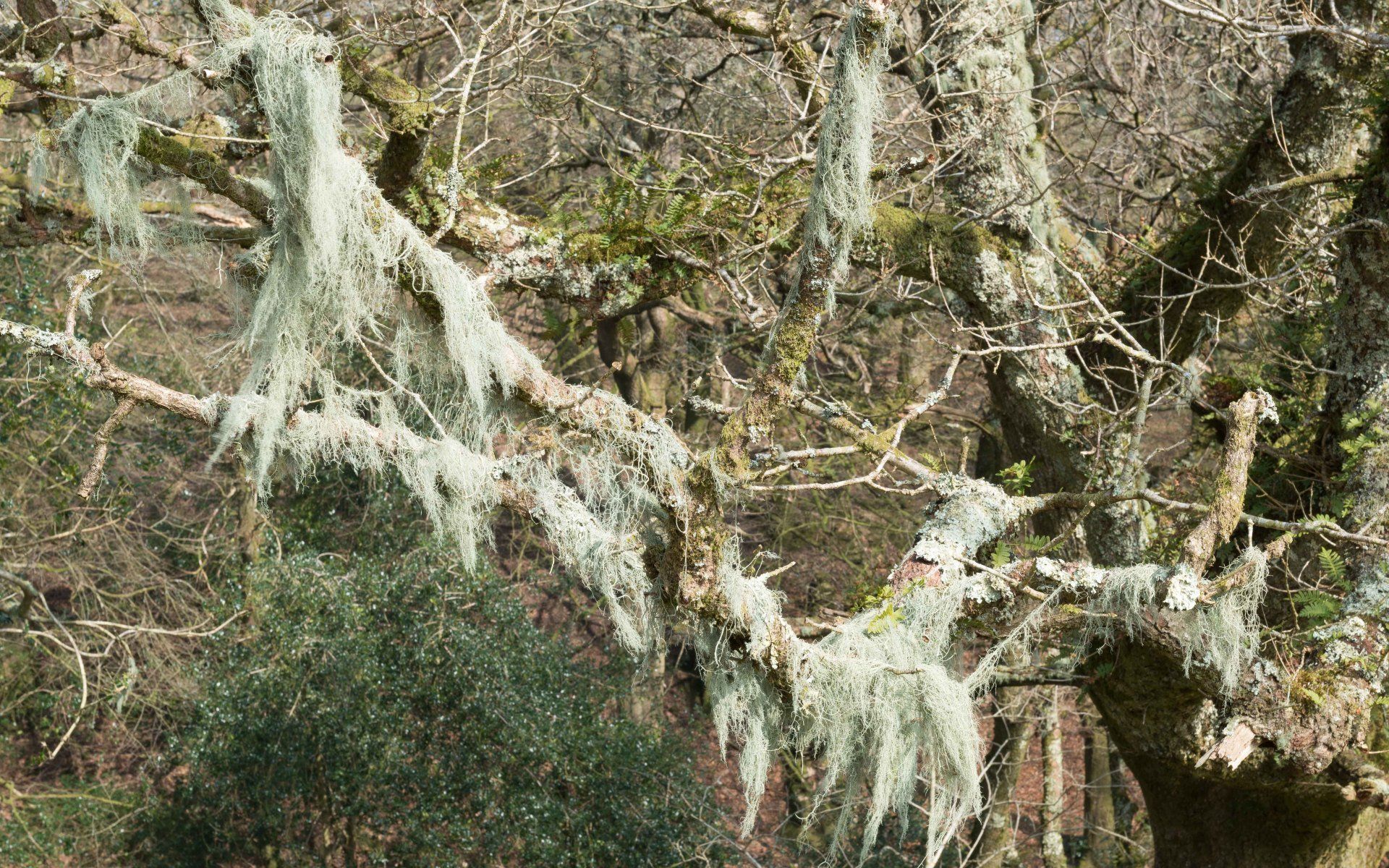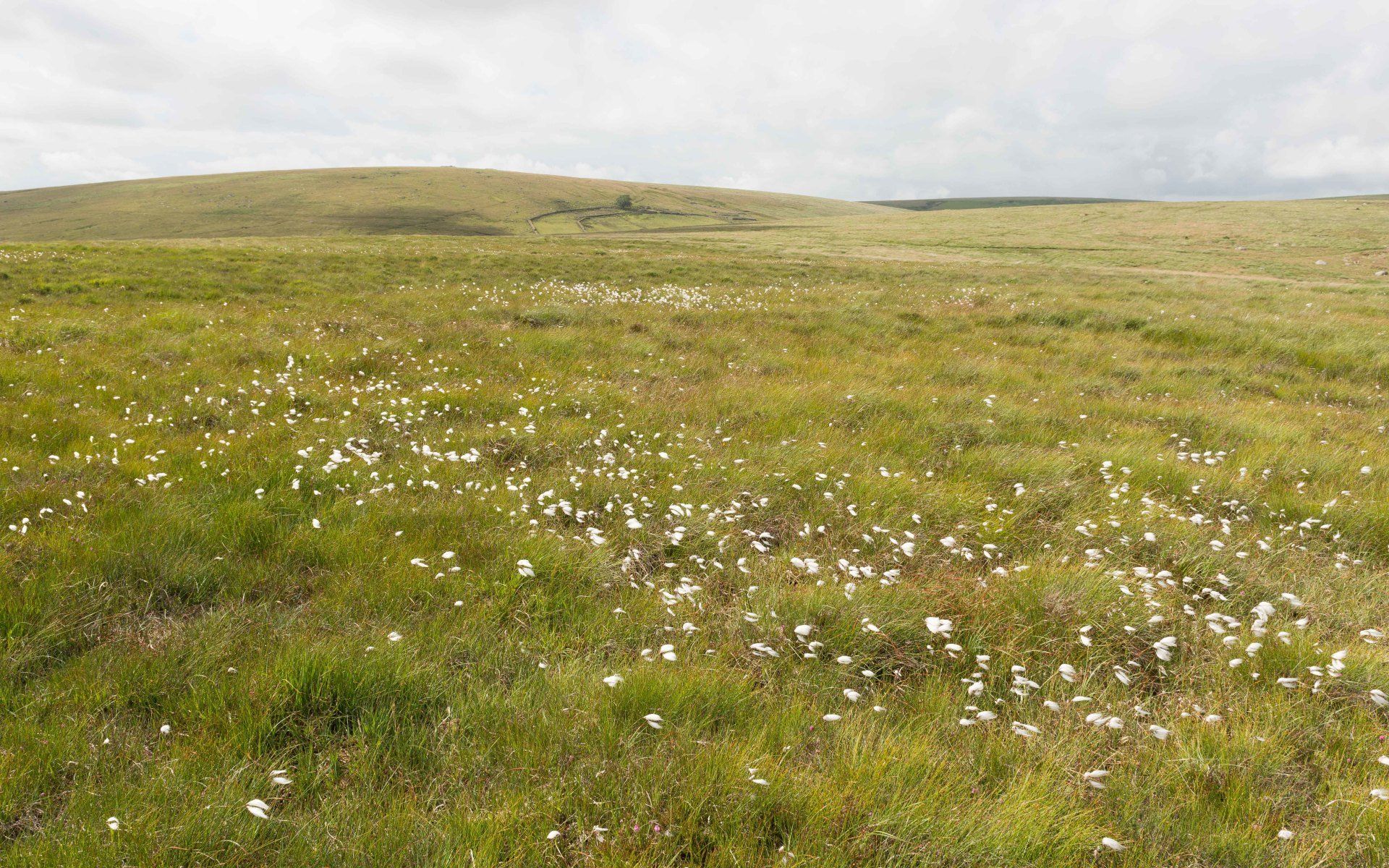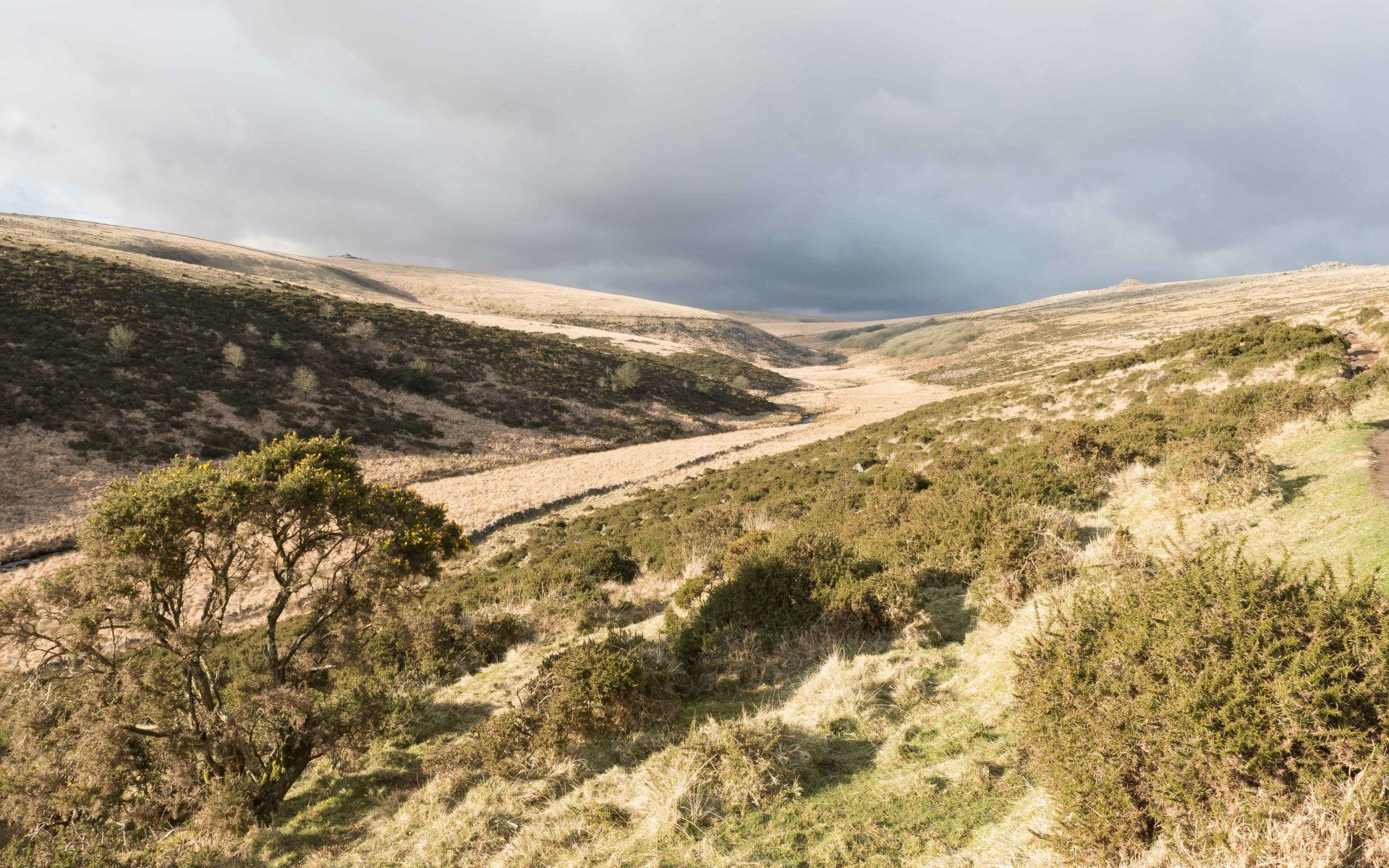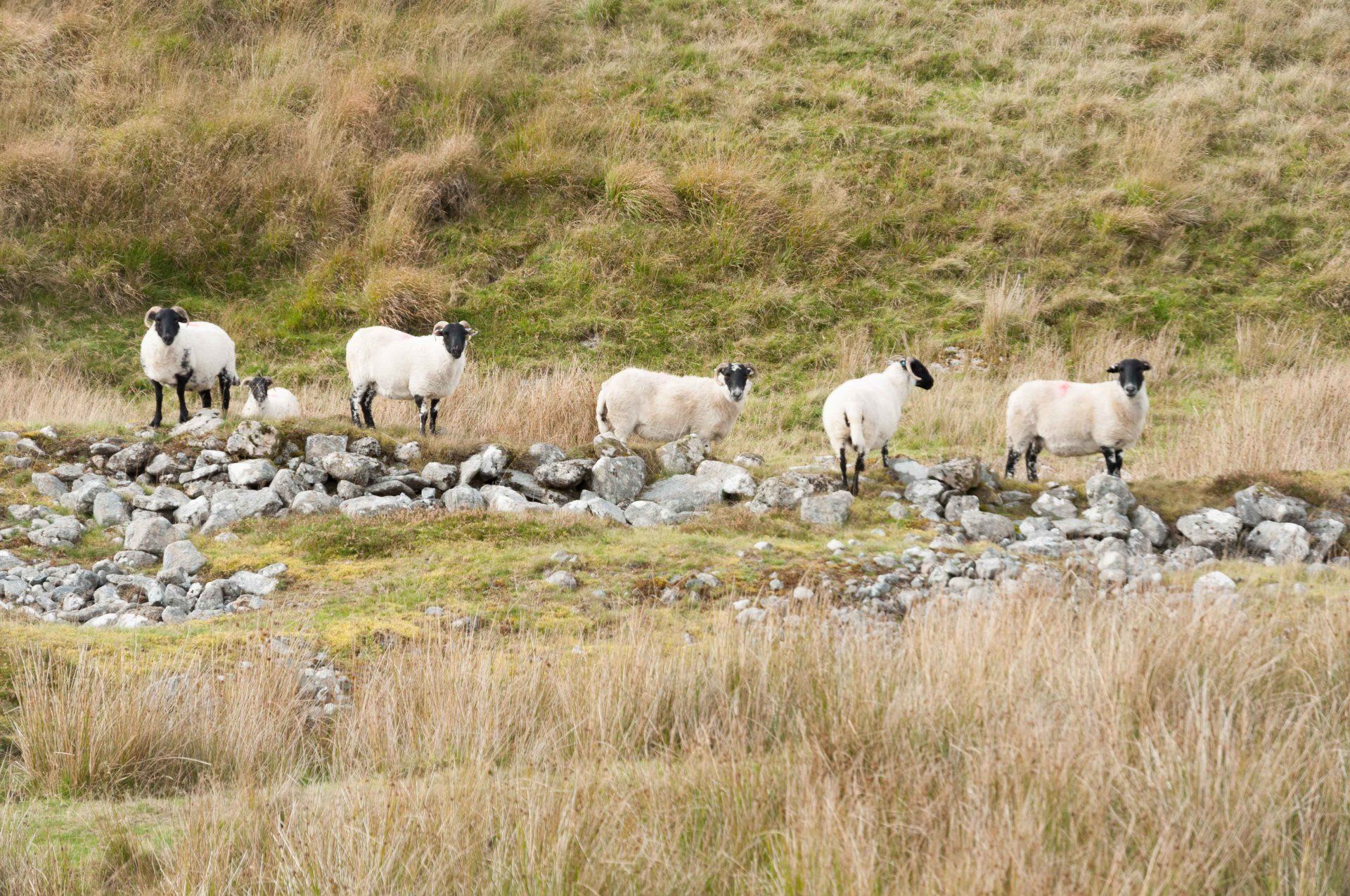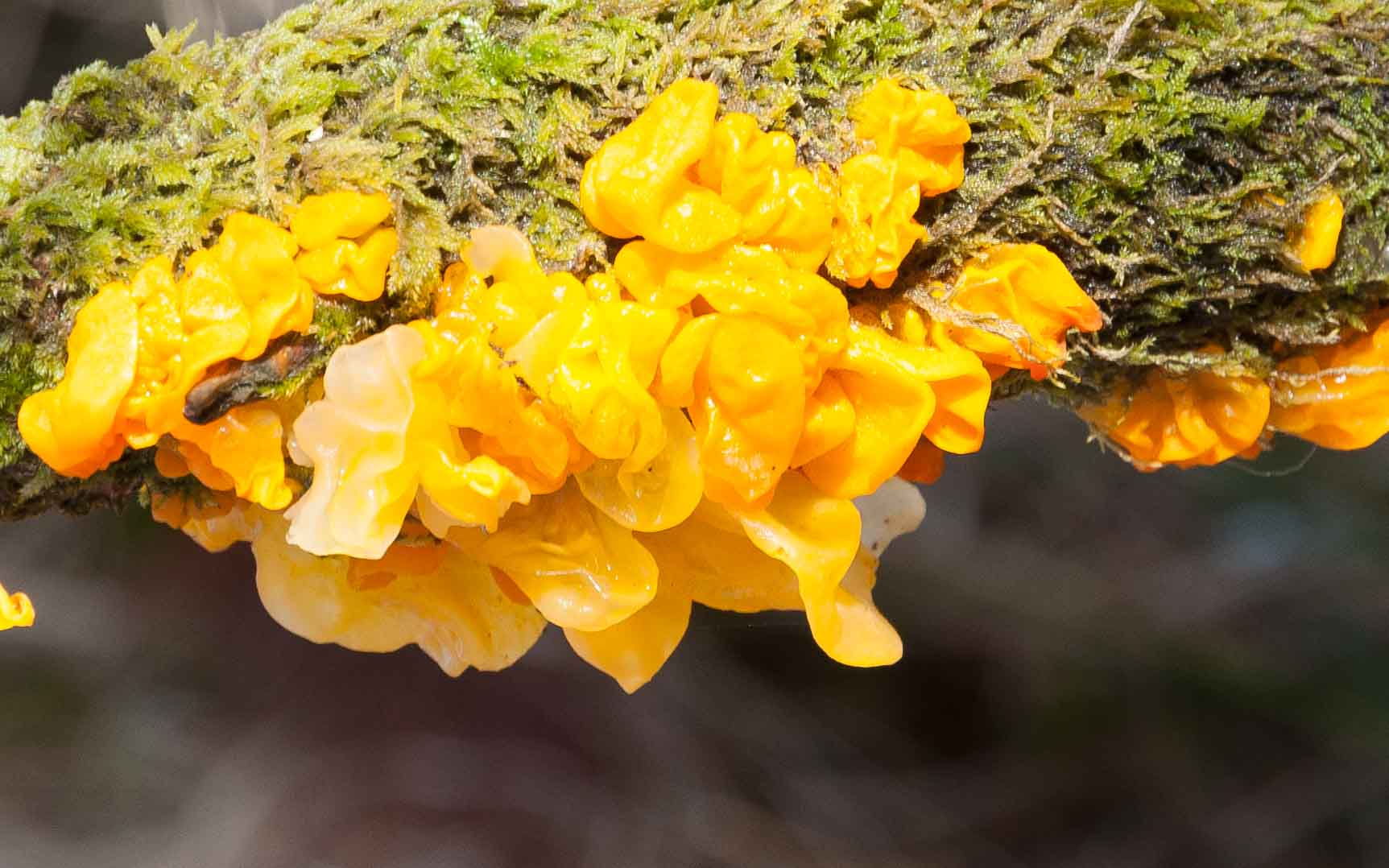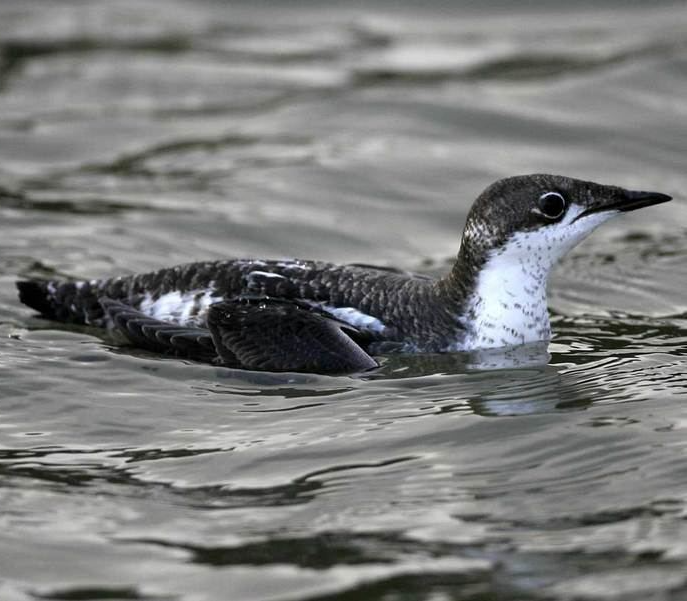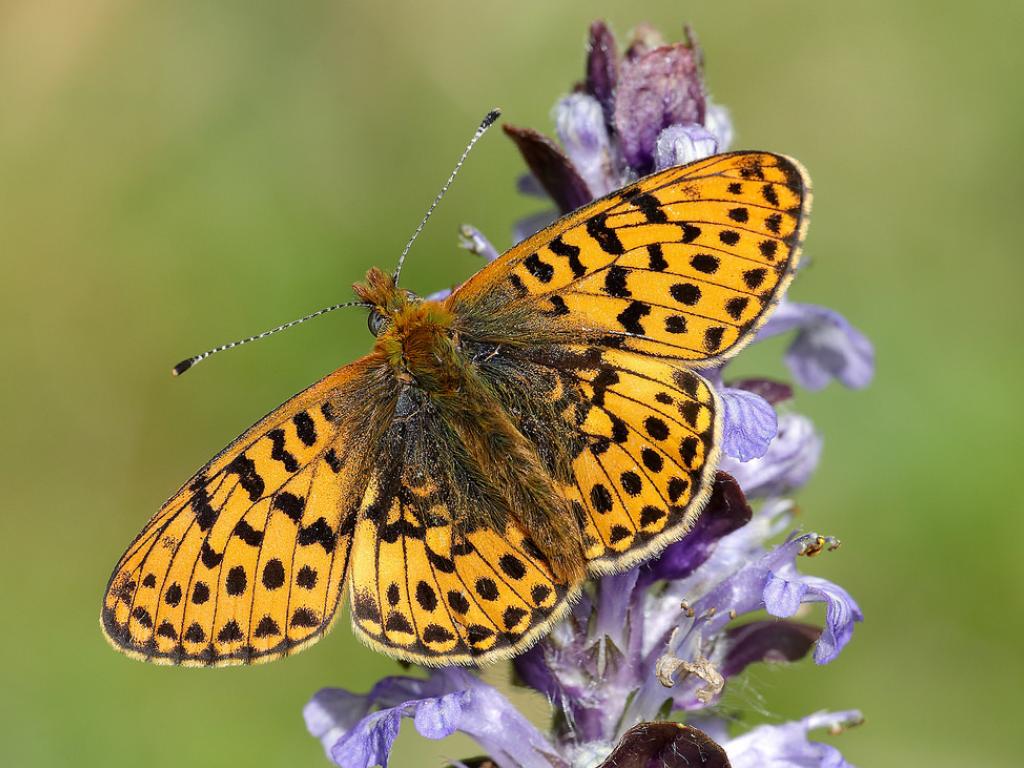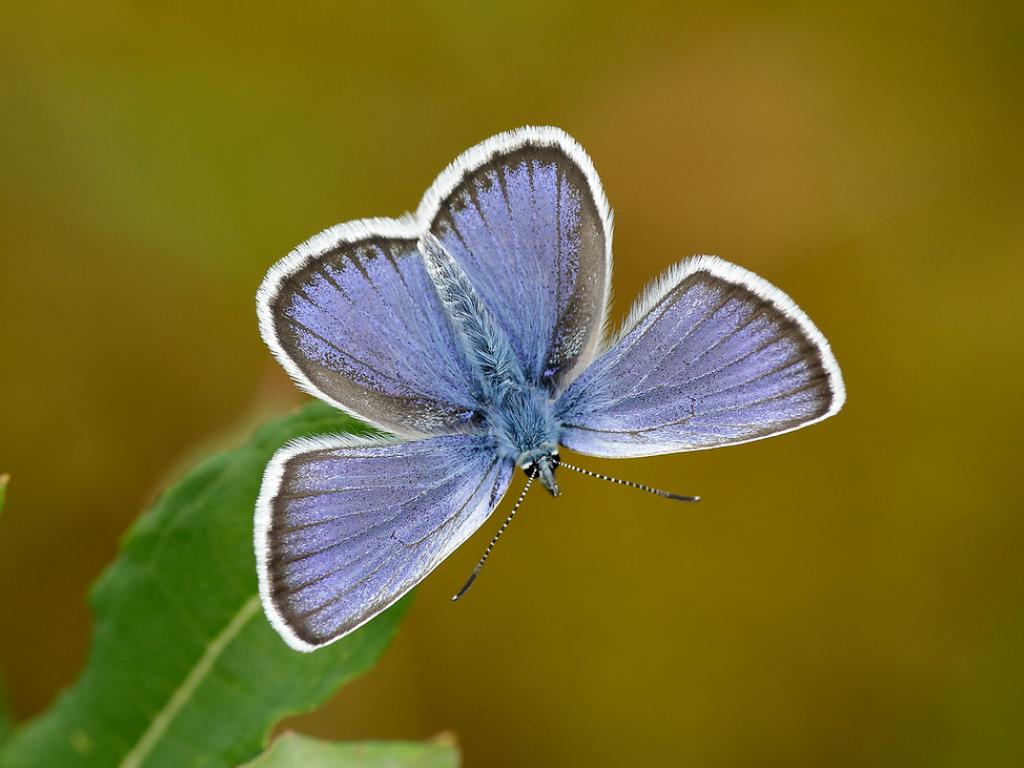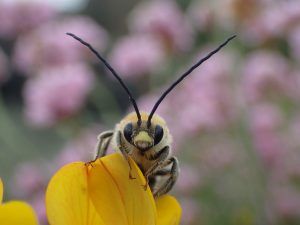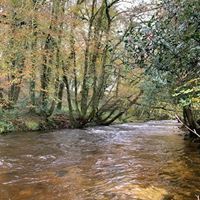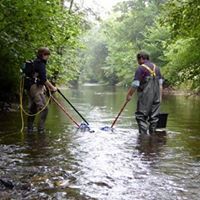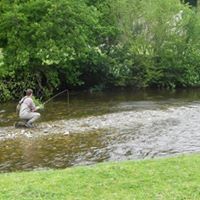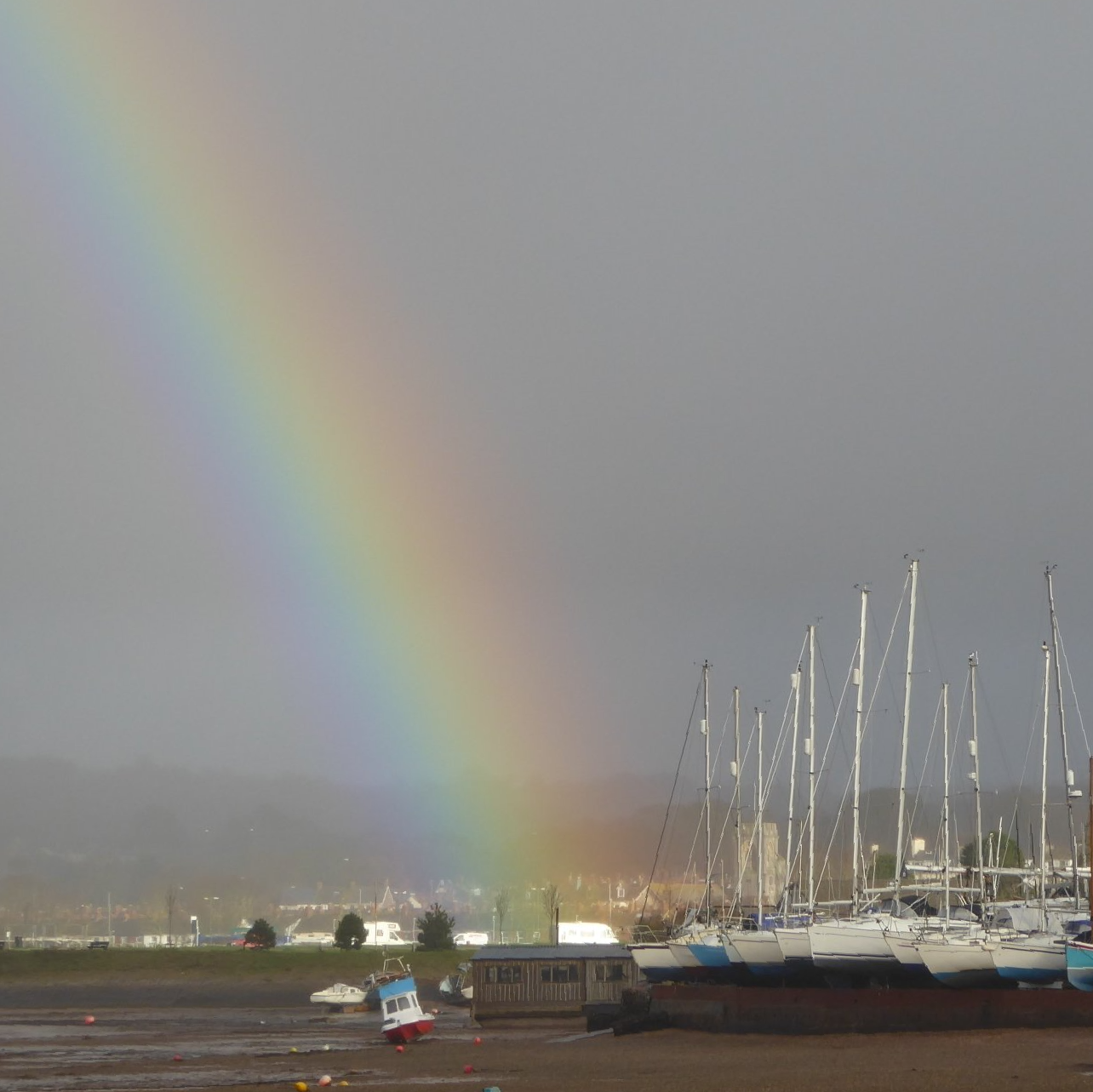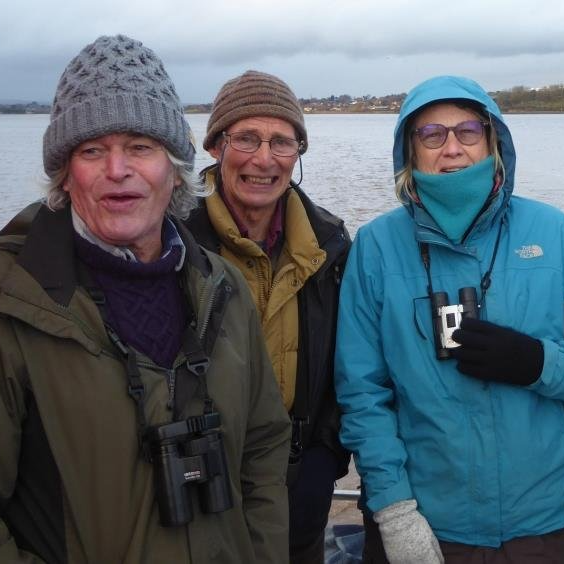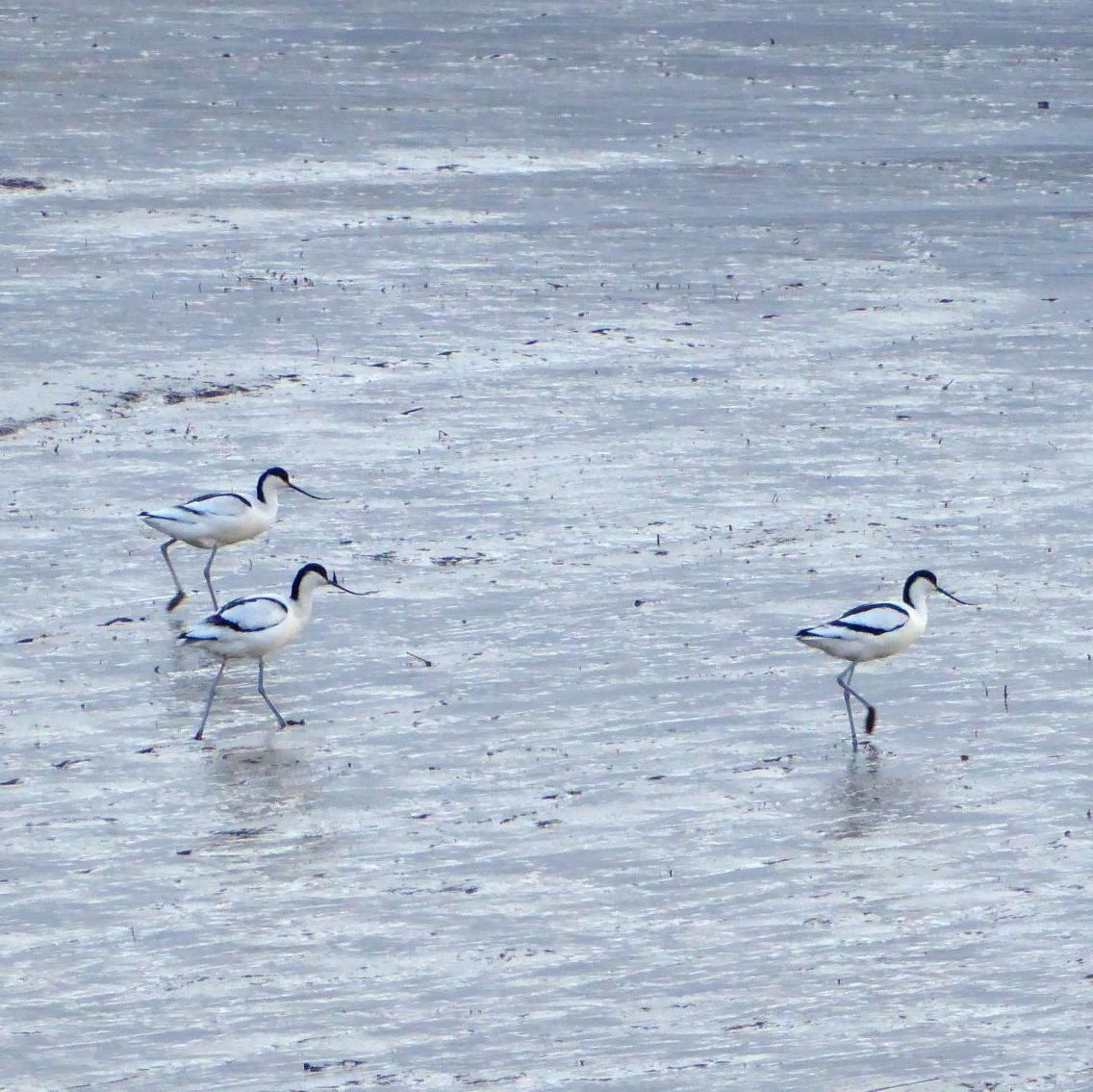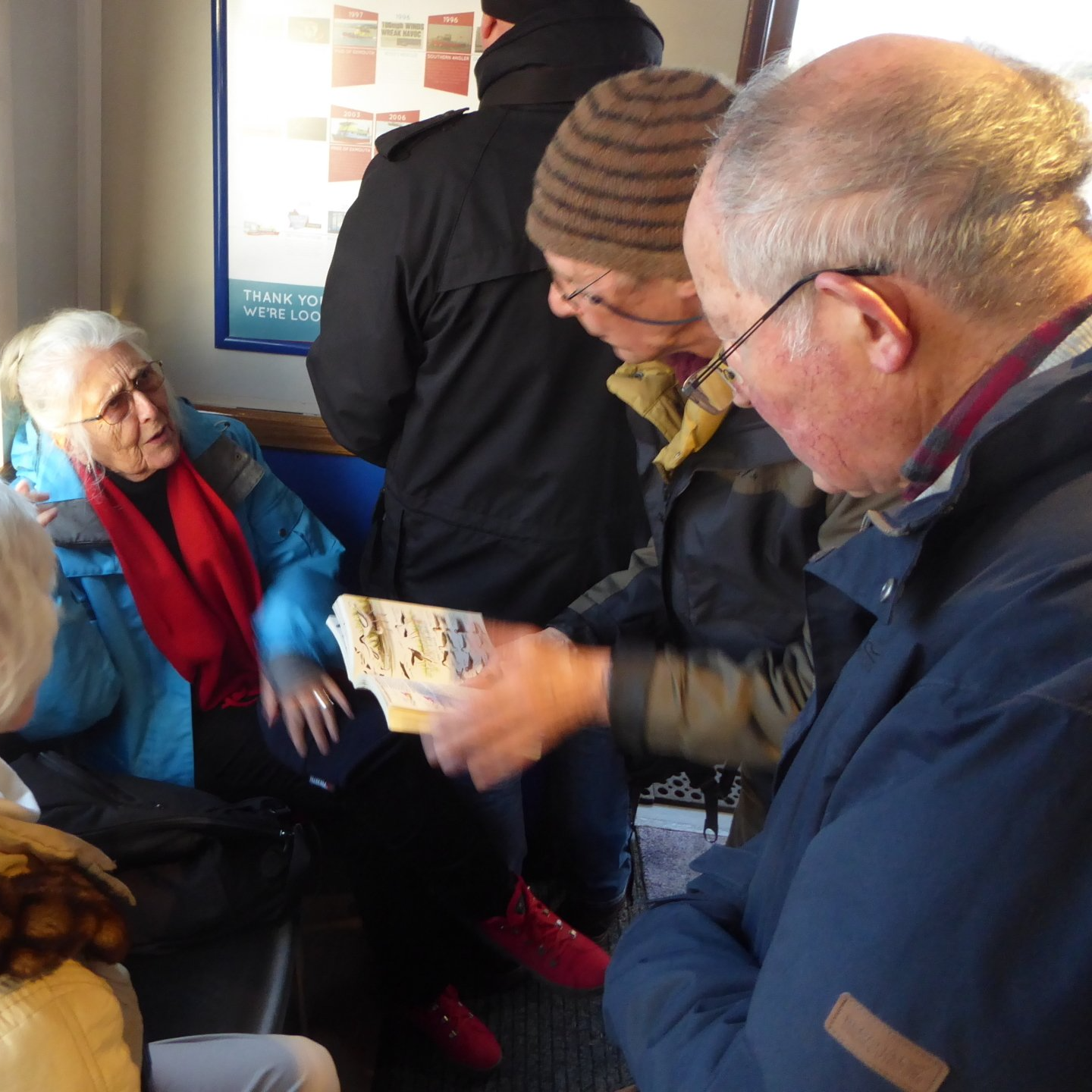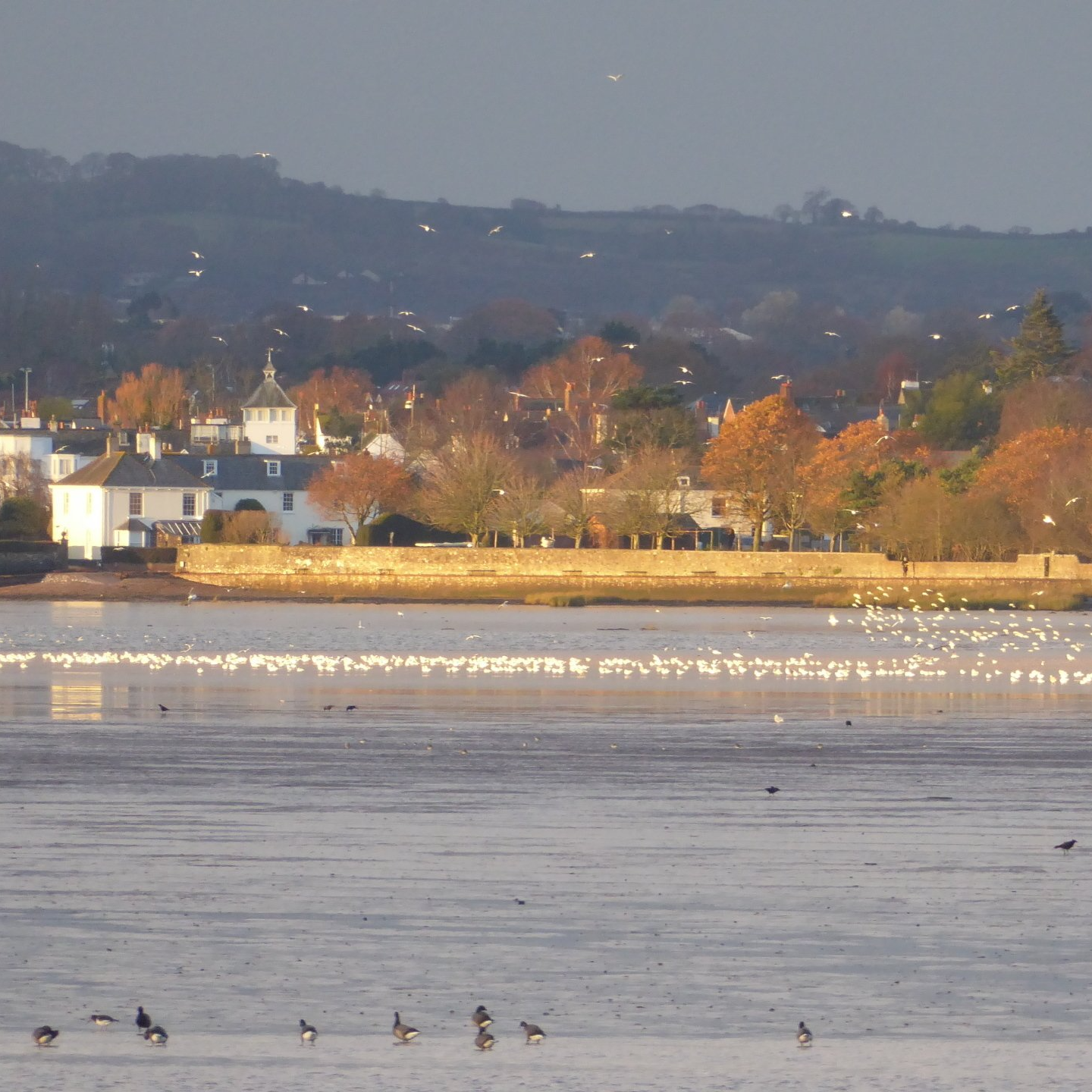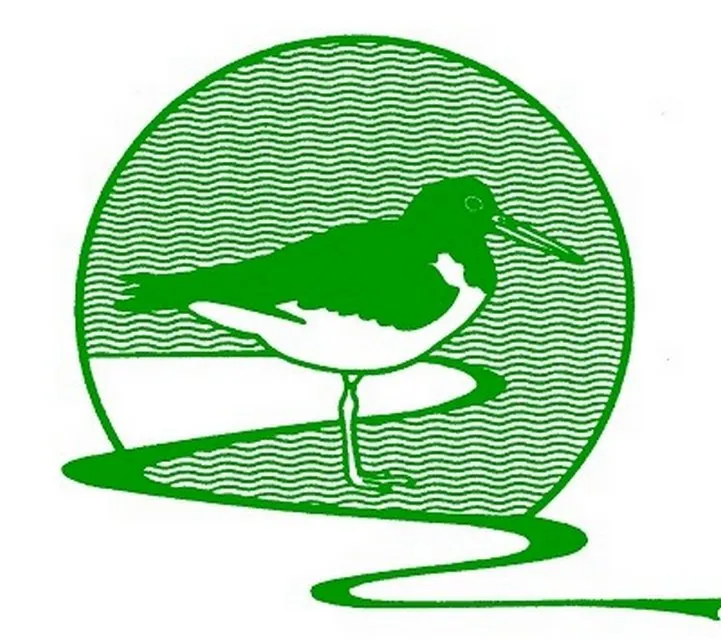The visit to Yarner wood and Trendlebere Down.
Wednesday 26th April 2023
A group of thirteen members met up to explore Yarner Wood on the edge of Dartmoor, above Bovey Tracey. As soon as we entered the wood we started to get quick glimpses of the black and white pied flycatchers flitting from branch to branch and sometimes diving into a nest box. These were the main birds we had come to see and with over 500 nest boxes erected and maintained by Natural England staff and volunteers, they have plenty of nesting opportunities. We saw them throughout our visit on an overcast and rather chilly day which seemed to have the effect of supressing the expected volume of bird song which Yarner sometimes produces.
We saw blackcaps and listened to their songs and argued about whether they were garden warblers or blackcaps. One at least seemed more garden warbler. Blackbirds and thrushes, robins and a variety of tits were in evidence. One marsh tit was seen feeding with blue and great tits and a few long-tailed tits bounced among the treetops. Chaffinch, linnets and willow warblers sang on the edge of Trendlebere Down but we had no clear sighting of tree pipits. Few woodpeckers were drumming but we saw a recent hole drilled by a lesser spotted woodpecker in a slender birch. Another birder had seen the bird and located the hole for us.
No redstarts were seen, perhaps the low temperatures of recent days had kept them quiet. However, three members of the party stopped at Emsworthy Mire nature reserve on the way home and both saw and heard a cuckoo and were told by others that two redstarts were present.
Several members were not familiar with Yarner wood, and said they were pleased to have visited and will be likely to return on another day. Thanks to Mike, Lesley and Doug who helped with the guiding.
Chris Klee
Report of the Society talk on 28th March 2022
A radical change in NT policy, which will greatly benefit wildlife
by Emma Reece
Ranger for the National Trust land, Salcombe to Hope Cove

Emma has been putting a new management plan into practice on the Trust’s farm and coastal land for the past two years and came to tell us about the impact this has had. Previously the farm wa s under a tenancy, but now the land has been kept under direct control, with contractors cultivating fields or grazing with cattle or sheep in accordance with the new plan. The aim is to give far higher priority to maintaining and improving habitats and biodiversity, with an emphasis on creating permanent pasture, restoring old field banks and hedges, planting trees and restoring ponds.
Nearly all of the coastal strip is priority habitat and SSSI and management already aims to protect this status. It is very rich in wildlife, with surveys in 2021 recording 19 pairs of wheatears nesting, 60 breeding pairs of cirl buntings, a diversity of butterflies, including small silver-studded blues and a wonderful abundance of wildflowers such as bloody cranesbill, thrift and kidney vetch. Several peregrines nest along this coast, as do ravens, shags and cormorants.
On the farmland she has organised volunteers and staff to plant 11,000 hedge trees/shrubs and 2,000 trees in copses around field edges. Beetle banks have been created and arable fields, left fallow for two years to reduce artificially high nutrient levels, have been scarified and seeded with green hay donated from local species-rich meadows by Devon WT.
A wet valley bottom above Soar Mill Cove has had three ponds dug out and the soil used to build new field banks thus creating smaller fields. Teal, common and green sandpipers and dragonflies have used these straight away and a rich biodiversity will quickly develop. The small fields will produce sunflowers, poppies and lupins providing seed for birds as well as a spectacle to delight the eye.
The Trust is able to use funds from Countryside Stewardship status for 5 years and contractors are meeting the conditions in all sorts of ways described as “regenerative farming” which will allow crops to be grown with less environmental damage. Crop rotation, no till cultivation, undersowing with nitrogen fixing plants, using natural manures etc will all reduce the need for artificial inputs. What is good for wildlife will be good for climate change mitigation. The uplifting experience of walking across this huge area of land (660 hectares), with skylarks (276 breeding territories in 2021) filling the air with their songs and grasshoppers and butterflies rising around your feet, will be an experience to cherish.
Thank you Emma.
Chris Klee, 30th March 2022.
Report of the Society talk on 28th February 2022
by Matt Boydell
At this, our second restart evening meeting, after Covid interrupted our programme yet again, it was good to welcome Matt and hear about some success stories from the large suite of 62 DWT reserves
for which he is responsible. He explained he was not so much a field officer these days, but is the one to help formulate the best management plans for reserves. He also supports the team of Reserve Officers and their assistants who do carry out the required habitat work on the ground.
At Marsland, a 190 hecta re reserve in North Devon the abundance of butterflies was greatly reduced as the site had become a mature woodland where clearings were covered in swathes of dense bracken. This level of shading had suppressed ground flora and the first thought might have been to get rid of the bracken. However, experimental mowing of the bracken in spring resulted in a welcome flowering of plentiful violets, plants which were sheltered over winter but unable to thrive if the bracken persisted. Violets are the food source of many fritillary butterflies and some years later Marsland now supports strong populations of fritillaries, especially pearl bordered. At reserves on the Culm grasslands of central Devon, he has found the best regime to include light grazing by hardy cattle allied to a patchwork regime of controlled winter burning which just takes the tops off tussocky grasses in small areas each year, and results in strong growth of scabious plants. The larvae of marsh fritillary butterflies feed on scabious and are now doing very well at Dunsdon
reserve. What has benefitted one species has been good for many others and this orchid rich site is evidence of healthy biodiversity.
Matt told us about many good places to visit, especially Meeth Quarry
reserve in Mid Devon, Emsworthy Mire
near Haytor, and Teigngrace Clay workings
near Bovey Tracey. He finished off nearer to Kingsbridge by telling us about new plans for Andrew’s wood
where the current policy of very light grazing with four Dartmoor ponies is not sufficient to provide good conditions for the rare heath lobelia flower. He now proposes to introduce some cattle to keep scrub down and provide patches of bare ground where the lobelias should grow well.
Nature reserves are vital places where wildlife can survive away from the harmful effects of intensive agriculture. Not only are reserves vital for species they also are great places for us to visit and to benefit from encountering the wild world.
Chris Klee, March 2022
Society members Birdwatching Cruise on the Exe estuary, 14th February 2022
Eleven members joined Stuart Line’s birdwatching cruise leaving Exmouth Marina at just after 11.15am. We headed out to pass along the Exmouth seafront where, outside the offshore bar, the braking waves were throwing up considerable spray. Here we saw good numbers of Dark Bellied Brent Geese, together with long billed Curlews, Oystercatchers and Herring Gulls. Our guide described how Oystercatchers are skilled at opening mussel shells, but then have to be quick to eat the soft interiors before Gulls come in on smash and grab raids. Many Gulls have learnt this method of getting a meal which is termed klepto-parasitism.
As we passed back into the quieter waters of the estuary, our guide told us how monitoring studies had shown that dog walkers caused significant disturbance to geese and waders on the huge areas of firm gravel and sand exposed at low tide. Results have persuaded the Harbour Authority to close off sensitive areas to walkers with the result that levels of disturbance have now reduced. We spotted a small flock of Turnstones and learnt the difference between Shags and Cormorants, some of which were developing the pale heads of their breeding plumage.
The further up the estuary we sailed the more concentrated the birds became and the closer views we all had. Red Breasted Mergansers showed up in small packs, some fishing on the water, others flying fast and low beside the boat. At close quarters the male Mergansers looked stunning with their patterned feathers and wispy head crests. Oystercatchers, Curlew, Shelduck and Redshank were dotted along the shore line and an impressive line of Brent geese, several hundred strong, lined the edge of the channel. A small flock of pretty Ringed Plover gave us close views and there were Grey Plovers standing sentry duty here and there. Avocets began to appear, looking stunning in their black and white formal attire, and a pair of feeding Spoonbills was an unusual sight for the UK. A dark line on the mud near Turf Lock materialised as a roost of several hundred Golden Plover. Later we saw them in flight high in the sky. Great Crested Grebes put on a diving display and, off Cockwood sailing club, we saw Heron’s nests in tall oaks one even with a heron in residence.
At Topsham we saw a good number of ducks; Teal, Pintail, Wigeon even a Mallard or two. A single Spotted Redshank, a rare visitor, gave very close views beside the sea wall. But the sight which most impressed was the flying display of mixed parties of Godwits, Avocets and Plovers, with some Knot mixed in, as they thrashed into the air, up and over the boat and landed on the other bank. The flashing wingbars, pale bellies, the coloured legs and bills and dark backs gave evidence of the great abundance of this healthy population of water birds wintering on the Exe estuary.
Chris Klee
Report of the Society talk on 22nd November 2021
Shedding light on Moths
Richard Fox
proved to be an ardent advocate for moths. He began by challenging some of the commonly held myths surrounding them, such as they eat your clothes, they are dull brown things and they only fly at night.
In fact, the UK supports some 25,000 moth species, of which a mere two are able to eat a small range of natural fibres used as clothing. He showed us vibrantly coloured species; Large Emeralds and Elephant Hawk moths as examples of the bright and beautifully patterned ones and told us of the many day flying species such as Hornet Moths and the Jersey Tiger commonly seen in Kingsbridge.
The huge number of species means that moths make a significant contribution to total biodiversity. Many birds and bats depend on moth caterpillars or adults for food. One estimate of the number of oak moth caterpillars consumed by blue tits was a staggering 35 billion per year. Night flying moths are skilled navigators and many visit flowers to suck nectar and act as important pollinators of wildflowers, particularly orchids. Studies have shown that 33% of moths carried pollen in the UK and 75% in Portugal.
Richard showed us that moth abundance has declined over the past 50 years, perhaps by 33%, but our warming climate has resulted in the distribution of species actually increasing. Surprisingly 137 new species have colonised Britain, including Box Tree moths (Cydalima perspectalis), Jersey Mocha, and Evergestis limbata first recorded in Devon.
His own research has demonstrated the damage light pollution causes to moth abundance. Street lighting caused a 47% decline in caterpillar numbers and also reduced growth rates. LED lights were more damaging than the old-fashioned sodium lights, but the output of LED lights could be adjusted to reduce this effect. Red light affects moths least, ultra-violet the most. Richard has made a major contribution to Citizen Science studies of moths, designing the Butterfly and Moth recording scheme for Butterfly Conservation.
Chris Klee
Report of the Society talk on 25th October 2021
The hard physical work of a vet contributed to arthritic knees forcing Rupert Kirkwood to take up kayaking, resulting over the years in a vast distance of over 2,500 miles, which includes over a thousand miles of the south west coast and its inlets. Recording and photographing frighteningly close encounters with whales and equally thrilling meetings with otters and astonished deer. All this very much to the benefit of his audiences, some of whom can share the excitement from the security of a village hall without having to face the paddle to the Eddystone light and back or the potential dangers of the north Cornwall coast.
At the Eddystone far out to sea from Plymouth, Rupert was able to photograph many sightings of Minke Whales and described the wonderful sound of the whales blowing, clearly heard in the silence afforded by the kayak. Out at sea and often quite close to the shore he also saw the antics of pods of dolphins at play enjoying leaping out of the waves. The juveniles were normally the most acrobatic but sometimes the elders, recognisable by the black ‘beard’ line between flippers and chin, would join the competition for reaching for the sky and make spectacular leaps.
Beside encounters with wildlife out at sea Rupert has also explored rivers and creeks all along the coast of SW England. He showed beautiful photographs of otter families on the River Tamar and the River Torridge the home of Henry Williamson’s ‘Tarka the Otter’. It was the last stronghold of the species when they were nearly wiped out by organochlorine pesticides (and persecution) during 1950s to 1970s. Now the otters are thriving again and Rupert was able to record sensational views of otter families from his kayak.
Underlying the beauty of the photography is more than two decades of careful recording of numbers of wildlife sightings, including recently the rare Wilson’s phalarope.
This was a well-attended meeting and led to a lively question time with members of the enthusiastic audience recounting their experiences of seeing wildlife from the shores around the South West.
Ann Merrit
Report of the Society talk on 27th September 2021
by John Walters
It was quite an experience for us to get together for our first indoor meeting for over eighteen months, but a pleasure to see the familiar faces of our members again. Our speaker, John Walters, gave us a privileged guided tour of his home territory on the edge of Dartmoor. He started with his small Buckfastleigh garden, which he has made attractive to wildlife. His cotoneaster flowers were alive with bees and hoverflies in summer, then the winter berries attracted flocks of redwings. His ivy brought in Jersey tiger moths and his honeysuckle flowers hummingbird hawk moths.
When he led us up onto the moor, he showed us hornets and red admiral butterflies attracted to sap oozing from oak trees, the hornets interested in both the sap and in snapping up a butterfly, which resisted by flicking its wings aggressively. He showed us green hairstreak butterflies and even, on gorse bushes, their tiny larvae, which he discovered fluoresced in UV light. The pupa also emitted tiny clicks, which probably imitated sounds made by red ant queens, causing the pupae to be accepted into nests by the worker bees.
Higher up on the moor, we were treated to exquisite views of the behaviour of several ground-nesting birds. We saw a meadow pipit sitting on her four red-streaked eggs, then the appearance of an outsize extra egg, followed by the disappearance of the pipit eggs and replacement by a large cuckoo chick. Later, he showed us a poor little pipit so dwarfed by the near full-grown cuckoo that she had to perch on its back to deliver her beak full of food. Less well known is that cuckoos parasitise tree pipit’s nests, which he proved with his photographic evidence. In fact, John’s fieldcraft and patience have demonstrated many behaviours which are not generally known, such as that woodlice can be predatory; shown eating a winter moth, and that long-tailed tits regularly roost together, pressed tightly side-by-side on a holly branch, to survive cold winter nights.
As an artist who sketches and paints in the field, John captures the “jizz” of birds, their postures and behaviours, so brilliantly that he has won wildlife artist of the year awards. He is an expert observer and chronicler of Dartmoor wildlife and we could not have asked for a better guide.
Chris Klee
Newsletter - August 2020
Greetings to you all again during this strange Summer. We hope you are keeping well, and managing to cope with day to day life in new ways and meeting friends and family in safety. We thought we would share with you some of the wildlife we Committee Members have seen in recent weeks.
During the hot spell, the stars were mostly the butterflies. We walked over the flower-rich turf, on the plateau beyond Middle Soar Farm, and put up scores of butterflies at every step. Meadow browns
and Gatekeepers
mixed with numerous Common blues, a few Skippers
and a mix of small moths and grasshoppers, which made me think that insect abundance may not be a thing of the past after all.
Mike Hitch reported seeing high numbers of Marbled Whites
in his Gazette Diary and I bumped into Crinkle on the cliff path near Gara Rock where he saw good numbers of Small Pearl-bordered fritillaries, a second generation for this species. There seem to be plenty of the flashy red Jersey tiger moths
about too.
A walk along the estuary foreshore from Kingsbridge to New Bridge as the tide was rising, revealed very large numbers of thick-lipped grey mullet, some small fry splashing in the shallows, some shoals of fingerling-sized fish and intermediate sizes all the way up to great 4lbs monsters. These were lying in the extreme shallows, between beds of seaweed, gulping down mud, algae and invertebrates and filtering out the food through their gills. This distribution was repeated all the way down Bowcombe creek so the biomass of fish must be enormous. At the same location, Nick Cotter has also reported very large numbers of tiny shore crabs about 1-1.5cm across, as well as several stranded Compass Jellyfish, which are recorded as having a painful sting.
Juliet Morton has been fortunate in finding some interesting plant life. Firstly, Autumn Lady’s-tresses
in pasture on the edge of Kingsbridge. This orchid,Spiranthes spiralis, is a small plant with white flowers arranged in a helix around the upper stem. She also found the curious Red Basket Fungus
Clathrus ruber growing on the Hams at Bantham. Her photo shows the slightly collapsed red lattice-like mesh of this rare fungus. It is confined mostly to the South West and belongs in the stinkhorn family.
As for birds, our Estuary count on Sunday, saw an influx of waders returned from their breeding grounds. There were 133 Curlews and 129 Redshank and a lovely small flock of Black-tailed Godwits in Charleton Bay, most still in their summer plumage with rusty red necks and breasts. After straining our eyes to distinguish between small birds and clumps of mud, we also counted 164 Dunlin and 77 Ringed Plover. Tony spotted 27 Sandwich Terns, which Nick had also seen at Slapton, and 30 Mediterranian Gulls. Tony was the only counter to see the Osprey which had been reported by keen bird watchers. Crinkle has sent me a great photo of a Cattle Egret
and a Little Egret in the Lincombe heronry. There is no sign that cattle egrets have tried to nest yet.
Meanwhile, we are planning how to go about holding our first evening meeting on Monday 28th September. John Walters, the expert Dartmoor naturalist and artist, has been booked to speak and the hall think we can hold indoor meetings then. We will have to limit attendance to 30 people, with advance booking, and seating arranged so as to preserve safe distancing. We will give more details nearer the time and hope to see many of you again.
With best wishes to you all, from KNHS Committee members.
Walk at Emsworthy Mire
Chris Klee July 2020
Two members of KNHS arranged to visit Emsworthy Mire on Dartmoor.
On a lovely sunny day, we saw flowers, butterflies and dragonflies typical of high summer and a couple of surprising sightings of birds too. There were pink flowers of Lousewort in the damp turf and carpets of another low lying, delicate pink flower, with darker red lines inside the flower cup, which was Bog Pimpernel. Around the ponds created by Devon Wildlife Trust we saw a profusion of yellow flowered Marsh St. John’s Wort and masses of the yellow spikes of Bog Asphodel. There were still some Ragged Robin flowers but no longer any marsh or heath orchids in evidence. Bogbean leaves were in evidence in the ponds, but few flowers were out
The grassland was alive with Meadow Brown, Ringlet and Gatekeeper butterflies and we also saw Larger Skippers and a lot of Whites. Around the ponds several Emperor Dragonflies
wizzed around, the females with both thorax and abdomen green and the males with green thorax but blue abdomen. One of the females perched on an emergent pond-weed stem and lowered her abdomen into the water to lay a batch of eggs. There were many narrow- bodied damselflies and our best efforts identified these as; Common Blue, Blue Tailed and Azure Blue. Away from the ponds we saw a couple of brown Common Hawkers
The best bird sightings were of a Lesser Redpoll feeding on the seeds of a silver birch and a Marsh Tit which gave us good views of its black cap and gave a sharp pshew call. A pipit flying from, and landing back on, a tall shrub might have been a Tree Pipit, but since it didn’t sing, we couldn’t be sure. There were plenty of Meadow Pipits, Goldfinches and Linnets around and several Swallows and House Martins swooping over the fields. Then a pair of Great Spotted Woodpeckers landed in a rowan tree giving us good views before they flew off in their typical undulating way. When we left Emsworthy, I stopped to eat my sandwiches in a quiet layby just above Yarner wood and was entertained by a stunning male Redstart and a family of Stonechats.
Butterflies and Birds - Overbecks to Bolt Head
Chris Klee July 2020
On Wednesday 1st July, I set out to repeat, for the first time this year, a butterfly counting walk which I did many times last Summer for the National Trust. It was a delight to do this again and to feel the breeze in my (rather long) hair, spot some seasonal butterflies, and hear a good range of the familiar songs of the birds which favour this coastal strip
Under Sharp Tor the slopes beside the path were covered by masses of flowers, mostly close to the ground, so looking like a colourful counterpane spread over the ground. White-headed wild carrot was the dominant plant, with the flowers of cat’s ear and kidney vetch providing yellow colours and a few blue sheep’s bit a nice counterpoint
Further round, beside Starehole Bay, there was pink flowered thrift, and yarrow flowers, some white, some tinged pink and giving off a strong scent. There was also some true chamomile, which I trod on before I saw, so identified by the scent, and yellow Lady’s bedstraw, which has a delightful smell, as the name would imply
Here there are good views up the shrubby side of Starehole Valley and several whitethroats were engaging in territorial song duels. I think they must have been engaged in second nesting attempts as there were some fledged birds around too. Male linnets, their breasts smudged pink, sang from the tops of bushes and elsewhere small flocks flew off in bouncy groups. Goldfinches seem to be getting more frequent everywhere, and stonechats were in evidence
Ascending the path around Bolt Head, butterflies started to be more in evidence. Mostly gatekeepers
and meadow browns, the males of which are very dark and I puzzled over the identity of one until I saw the eyespots on the hind wing, which confirmed it as a ringlet. Higher up some large orange butterflies shot across the path and as they flew over brambles small gatekeepers flew up to guard their patch. One of the bright orange butterflies settled long enough to show white blobs on it’s underwing, so these were dark-green fritillaries. Just where I had seen them last year. In fact, this was an interesting observation, because I also found some silver-studded blues
on exactly the same patch of grass as before and small heaths where they should be. Clearly, these species are quite specific in their habitat requirements, and either don’t move far from their heartland or, for bigger stronger ones, they tend to choose traditional flightpaths
I scrambled down to the lower levels, where few people (except Crinkle) go, and the mix of flowers was even richer here, where trampling has been less evident, and the birds were everywhere on shrubs and bracken. Looking across to the Mew Stone, just off Bolt Head, I could see four shag families, a parent still keeping guard over one or two large fledglings standing near the nests. The herring gulls had left their nests too and a few cormorants sat on Little Mew Stone
On the walk back above Sharp Tor there were hundreds more brown butterflies, plus one marbled white, and the yellowhammer, which had greeted me on top of its blackthorn shrub last year, was there again, like a trusty friend.
www.nationaltrust.org.uk/bolt-head-walk follow this link for a slightly longer version of the same walk
Report on the Society talk on 24th February 2020
Nigel Grist
is a biologist with a ‘deep well’ of information and knowledge, a result of his interests in moor, marine and avian life. Additionally, he is an accomplished photographer and artist. His presentation this Monday, on the ‘natural and un-natural history’ of Dartmoor combined his knowledge and photographic skills in a most interesting, entertaining and memorable way. His photographs were beautiful; pictures in themselves
His post-graduate work started in Durham working on Kittiwakes, was followed by a research job in Hull and later he set up his own consultancy. Using his skill in building a database he created a master diagram of Dartmoor, identifying 379 tors and hills, with the target of walking to them all. He did this in 11 months, reckoning he and his hound covered 1,200 Km in doing so. He noted that a large number of the tors and hills are named after creatures: Crow tor, Cuckoo rock, Doe tor, Dunnagoat tor, Feather tor, Fox tor, Gnat’s Head, Hare tor, Hen tor, many of which he saw and photographed
The presentation was divided into sections, starting with Dartmoor’s geology, through witches’ hair and mossy beds, flesh eating plants, problem plants, bottomless bogs, dark woods, damsels and dragons, small hairy things, beasts on the air, serpents and toads, and other beasts to human, ancient and modern and our impact on the moor
Dartmoor is an enormous batholith, extending down 5 – 6 Km of granite, a mixture of felspar, mica, tourmaline and quartz. In places the tors appear like layers of pancakes, for example, Chat tor (Grid Ref. SX 555852) and Branscombe’s Loaf (SX 554892). This formation has resulted from a decrease in pressure on the granite as the thick overlying deposits became eroded. In several places pit depressions, erosion pits arising from repeated freeze-melt, such as on Heltor Rock (SX 799871) and the Devil’s Frying Pan (SX 562769) near Great Mis tor, can be found. It is not yet agreed whether Dartmoor was fully glaciated on not. The hummocks on the north side of Cox tor (SX 531761), and the ‘ribbons’ of granite on Great Staple tor (SX 842760), are evidence of glaciation from the last ice age.
Dartmoor Wildlife
- Clean air on Dartmoor has led to there being at least 354 species of lichen on Dartmoor, some having Dartmoor as their only known place. On Blackinstone Rock (SX 787856) alone there are 90 species of lichens and mosses. The Victorians even built steps up the rock so as to enable them to see them better. Lichens at the top of many rocks can differ from those lower down, due to birds perching and defecating on the top, so providing different nutrient conditions. Tiny, colourful lichens can be found on Dartmoor, such as Devil’s Matchsticks (Pilophorus acicularis), with bright red heads and a tiny yellow lichen, that breaks down rush and sphagnum moss. Some lichens are edible, but did not come recommended for their taste, such as ‘Rock Tripe’(Umbilicaria sp). A bright yellow parasitic fungus, ‘Witches Butter’(Tremella mesenterica), found on gorse, is parasitic on another fungus that lives on the gorse
Dartmoor Plant life
- The gorses are counted as a ‘problem plant’ and are routinely burnt. Sheep and ponies can eat the soft new growth. Bracken continues to be another problem. It can be discouraged by flattening it using heavy horses dragging sleepers over a period of 5 to 6 years. Now mechanisation is used to achieve the same end
Around the damp areas sundews, some with elongated leaves and some with round, and butterwort can be widely found. Both many headed and single headed cotton grass (Eriophorum) and yellow bog asphodel (Narthecium ossifragum) flourish in the many mires, such as Fox Tor Mire (SX 620710) and Emsworthy Mire to the west of Saddle tor (SX 751764). ‘Ossifragum’, the botanical name of the bog asphodel, might be associated with its effect on sheep, since it is thought that sheep which eat it can become doddery and fall, so breaking their legs. Marsh St. John’s Wort (Hypericum elodes) can also be found in the mires, being a good food for damselflies. Around the mires, wheatears, and stone chats can be found. The mires are dangerous, sheep and ponies meeting their death in them. Nigel showed us a photograph of one pony up to its shoulders in a mire that he and companions were able to haul out
Dartmoor has one of the main concentrations of upland oakwood in the UK, Wistman’s Wood (SX 770613) and Black Tor Copse (SX 563896), are the best known. Piles Copse (SX 643621) on the River Erme is another. Wagtails, dippers and kingfishers thrive there. These ancient woods are rich in epiphytic growth, with planus lichens and ferns on the branches flourishing
Nigel’s close-up photographs of damsels and dragonflies
were particularly beautiful. He had captured golden ringed dragonflies, red darters, skimmers, a large red damsel and finally a dazzling blue Demoiselle, that, he pointed out is only found by running water. He specifically mentioned Red Lakes (SX 641665) as a place to find Black Darters
People have had an impact on Dartmoor
from ancient times. The Neolithic monuments are apparent right across the moor. Examples were given of barrows and burial chambers (SX 668592) and stone rows, double rows (SX 651611 and 555748) and the long line of at least 1,000 stones still visible, running north above Ivybridge (SX 655575). Neanderthal flint tools have been found in a dig near Hay Tor (SX 757771). There are 400 Km of Reaves that 1,500 years ago divided the territory in to workable areas, suggesting a sophisticated social system and the muscle power necessary to create these 2 metre-wide low banks. Holne Moor is the best known (SX 66995)
.
Rowan trees often give a clue that you are near a tin working, tin mines being found all over the moor. Some are open work and deep, as is Hexworthy Mines (SX 654728). Around the River Plym the tin spoils at 90 Degrees to the river are very clear (SX 605675). Now the tin spoils have become a fine place for mosses and lichens to grow. Leats conveying water were constructed over Dartmoor, some to create power for the stamps that crushed the ore and the bellows for the furnaces. Many are still there
The tin miners were bound to have come across the distinctive adders, the grass snakes with the cream spots on its neck, and lizards. All are common. Maybe Stingers Hill (SX631660), near to a tin mine, was named following a number of unpleasant encounters. Rabbit keeping was an important industry, with hundreds of thousands being sent as meat to Plymouth and for fur to London. Huntington’s Warren by the River Avon (SX 660670) only ceased in the 1950s. The warrens were constructed on a south slope, cigar shaped and often 4 metres long. The spoil from the surrounding drainage ditch was placed centrally and turfed over with, at times, a granite slab over the ditch to enable access. A good example is Ditsworthy Warren (SX 585664) which shows a good number of these all in one place, clear drainage channels and the River Avon downhill and a leat on the upland so constraining the rabbits’ movements
It was an excellent presentation. This was a well-attended meeting (51 people) with several members of the Kingsbridge Camera Club
attending as well as our usual members. It was good to see them
Juliet Morton
Report on the Society talk on 27th January 2020
by Adam Davidson
Adam, the Project Officer for the AONB, has a long pedigree as a wildlife enthusiast. He started his talk by showing images of his field notebooks, begun when he was under 10, which demonstrated the excellent records he made of the birds he had seen and his skill as an illustrator. He became a fully-fledged “twitcher” as a young man and explained how the term arose from the reaction of young birders, waiting in Nancy’s Café in Cley on the north Norfolk coast, when the phone rang to announce the latest rare bird sighting. He showed photos of twitchers at Dawlish, viewing the only
long-billed murrelet
ever seen in the UK, and of the
catbird
spotted at Land’s End in 2018
Having established his enthusiasm, he told us about the role the AONB play in a partnership with other agencies and landowners in seeking to protect local wildlife currently classified as at risk of extinction. Nationally the AONBs have been set a target of helping the 30 species currently on the “endangered list!” to grow their populations to a size which will make them safe. South Devon has a number of these species. Two interesting examples are the six-banded nomad bee (Nomada sexfasciata), only recently recorded at Prawle Point, and a first for the whole UK, which is an attractive yellow and black, banded solitary bee which feeds on a species of everlasting pea. It is a cuckoo bee, laying eggs on the fur of another bee species, the long-horned mining bee (Eucera longicornis). This bee digs a tunnel in sandy ground into which it stores food and lays it's eggs, only for the cuckoo bee’s eggs to also fall into the tunnel. Here the cuckoo bees eggs develop into larvae which eat the pollen stored for the host’s own offspring. Both species are very rare so the project sets out to understand what habitat will allow them to thrive and then to create it
Similar projects seek to help the Mediterranean oil beetle, once thought extinct but now rediscovered in the South Hams and the Great green bush cricket. Devon supports rare bats too and the Grey long-eared and the Greater horseshoe
are other project targets
Flowers such as Small-flowered catchfly
(Silene gallica) and butterflies including Pearl-bordered fritillary, Small blue
and Silver-studded blue
are all included in South Devon AONB’s target list
This was a well-attended meeting (42 members) and Adam fielded an extended and lively question-and-answer session
Chris Klee
John, the Chairman of the AFA and a keen flyfisherman, told us the Association was set up in 1885, mostly by country gentlemen, such as the Vicar of Diptford and his son Jack Notley. Jack fished the river for 81 years and in these early days they stocked with brown trout from Loch Leven in Scotland. The Kingsbridge railway spur made it possible to drop batches of these fish into the river at convenient points, such as Topsham bridge. Jack reportedly caught 1,000 fish in a single season
There was always a run of salmon but by the 1970s it was realised that a run of sea trout had also developed. In a good year, before the second world war, 600 salmon could be caught and they were known to spawn upriver in tributaries like the Glaze Brook or in the main river even high up on Dartmoor above the stretch now under Avon Dam, built in the 1950s
Sadly, salmon numbers have declined in all England’s southern rivers, perhaps largely because of changing conditions at sea. Numbers caught on the Avon now number less than 10 a year and the members now return all fish alive and handle them in a careful way to allow the breeding stock to reach spawning areas
The members also monitor the flylife using a standard methodology which allows them to assess water quality. Happily, this nearly always indicates good quality, though if they suspect a pollution incident they quickly inform the Environment Agency. John showed us images of the most abundant invertebrate fauna, including the mayflies
and stoneflies
so important as trout food and to the anglers who tie their artificial flies to imitate them
He also told us about a project, funded partly by South West Water, which has been operating for six years under which spawning gravels have been added to the river below the Avon Dam to replace the natural supply of erosion materials, now intercepted by the dam. A number of weirs, which can act as barriers to upstream fish migration, have been modified and some fish passes installed
Chris Klee
Report on the Birdwatching cruise on the Exe Estuary - Weds 26th November 2019
Fifteen KNHS members met up at the Marina in Exmouth for the
Stuart Line Cruise
on the broad Exe Estuary. The forecast had been for strong windy weather with frequent rain, but although we started off in slightly misty and damp conditions, the rain mostly stayed away and the wind did not affect the sheltered estuary at all
Dave Smallshire, the local WeBS counter and bird expert, provided an excellent commentary on the birds we saw, or sometimes those he saw and we struggled to find, as well as telling us about the local geography and details of the feeding areas of different sections of the waterway
At first, we saw oystercatchers, dark-bellied Brent geese, shags and some flocks of wigeon, but because the estuary is so wide here (about 3 miles), most on the birds were far away. Still we all tried hard to spot the immature eider duck, the female common scoter, and the turnstones, as well as the peregrine falcon, expected on Exmouth church tower, but which suddenly appeared in fast pursuit of a collared dove, which just managed to evade capture by a sudden swerve
Our perseverance was rewarded further up the estuary because the narrowing channel and the closeness of the mud and shingle banks brought delightful arrays of water birds into close view. There were curlews scattered over the muddy areas, together with a mix of redshanks, dunlin and ringed plover. A small flock of knot
provided a good size contrast with dunlin, and grey plovers flew to show their black armpits. Both bar-tailed
and black-tailed godwits
probed the mud with their long straight bills and red-breasted mergansers dived and surfaced close to the boat. Star ducks were possibly the pintail,
though colourful wigeon perhaps ran them close. A Slavonian grebe, a regular here that Dave told us remained all year only because it had lost the ability to fly, put in an appearance, and we saw a big flock of lapwings and a huge one of golden plover
As ever, the star turn was provided by hundreds of elegant avocets, some on the silt banks but good numbers performing synchronised, close formation feeding in the water and that very close to the boat
The energetic among us enjoyed the open upper deck with little discomfort, while others were kept warm and comfortable in the heated lower deck, where the bar did a lively trade in hot drinks and snacks. All agreed this was a really good outside event, and the boat an excellent bird hide with 37 species seen
Chris Klee
Report on the Society talk on October 28th 2019
Different Stakeholder Narratives of Dartmoor Commons

Adrian is researching the way Dartmoor Commons are managed, and how the life histories of people and the past activities of the agencies with a stake in the moors, are still making it hard to reach a consensus on the best way forward
The commoners have grazing rights over some 45% of the moor and in the past applied hard-earned experience to regulate their stock to achieve good management. Over more recent decades economic reality has meant farmers only scrape a living because of subsidies, paid by Governments to encourage or enforce changes aimed at improving the conservation of wildlife, landscape and archaeology
Visitor numbers have also increased and this is an added pressure. Many of the regulations have had a negative effect, some resulted in overgrazing, others have reduced the active management done by the commoners such as swaling (burning)
At present too large a proportion of Dartmoor is covered by Molinia or Purple moor-grass and by gorse. This reduces good grazing for livestock, makes walking difficult for tourists, and covers stone rows and barrows, so no one is happy. In addition, farming traditions have broken down and traditional harmonious relationships within the commoner’s community have deteriorated. Meanwhile birdlife has suffered, with many species such as lapwing, curlew and even cuckoo suffering serious declines
Adrian clearly has sympathy for the farming families but understands the need for good science to be combined with traditional knowledge of appropriate husbandry to reverse the degradation of the commons. Currently, the farmers have been told they will continue to receive financial support for 7 years, but this will be replaced by a system of payments to reward public benefit, such as reducing flood risk, and ameliorating climate change
The future is very uncertain. During questions the role of the commoners was challenged, with the view put forward that their rights should be removed, grazing intensity reduced further and large areas of Dartmoor should be allowed to revert naturally to broadleaved woodland. One member handed out a bag full of acorns, suggesting we should all plant these over the moor
This was a thought-provoking talk for all of us who care about Dartmoor, its wildlife and the people who live there
Chris Klee
KNHS Walk at Southdown Farm 15th October 2019
On a sunny and calm day, a rare event this October, 14 members and guests followed Colin and Ness Mills on a walk around Southdown Farm, near Malborough. The land, owned by the National Trust, was farmed by Colin and Ness for 27 years before they retired in 2018 and they had introduced many practices of benefit to wildlife
Walking over large fields of barley stubble we soon saw sky larks springing into the air, some swirling around before dropping back to earth and some rising high and bursting into song. We heard cirl buntings, though they were reluctant to show, but several male yellow hammers sat up well for us to see, their bright yellow heads very evident in the sunshine. Stone chats were all over the place, males, females and juveniles, the latter with rosy pink breasts looked particularly smart. Flocks of linnets appeared now and then over hedgerows and we saw a scattering of meadow pipits and goldfinches
In all we saw some 22 species, though not the ring ouzels and goldcrests we had hoped to find. There were good numbers of red admiral butterflies and we caught a distant view of two sika deer crossing a field and hiding themselves in a large patch of hillside scrub. We also stumbled over some field mushrooms, growing in quite large rings.
Many thanks to our guides and to the National Trust who gave permission for this walk over private land.
For more information about National Trust recommended Devon walks in Autumn please visit
Chris Klee
Report on KNHS Talk on 23 September 2019
Exeter Peregrines by Nick Dixon
Nick has followed the progress of peregrine falcons which nest on St Michael & All Angels church in Exeter for over 20 years, making his study the longest running record of urban nesting by this iconic species. He gave us an impassioned account of how falcons first showed an interest in the site in the 1990s and in 1997 nested successfully on the remains of a stick nest used previously by ravens
Since peregrines do no nest building, the available ledge would have been too narrow without this help. With help from Nick, a succession of pairs has raised fifty nine young in succeeding years and he has studied their diet by collecting wing fragments from the ground and discovered surprising results. Though pigeons and doves form the bulk of items eaten, he also found remains of herring gulls, terns, small ducks, corncrake, quail and little grebes. Some of these birds migrate at night, showing that in this urban area with street lighting, peregrines catch prey at night
Nick gave an excellent account both of peregrine biology and of the history of the decline of pairs in the UK from 874 in 1939 to a low of 385 in 1961, when DDT and other pesticides were heavily used, and the subsequent recovery after these persistent chemicals were banned
He also told us the story of how the present pair have become such aggressive defenders of their territory, including the whole of Exeter, that they have attacked and killed 87 buzzards over the city. This is believed to be unique behaviour which the pair have developed. The smaller male attacks first, causing the buzzard to extend its legs and talons in one direction then the larger female attacks the undefended back of the buzzard, connecting with a killing blow
Chris Klee
Report on the Society talk on 25th February 2019
Rebecca Hosking gave us an account of her own experience of pastoral farming at Village Farm East Portlemouth, where she practiced a radical form of mob grazing, designed to preserve living soil and increase biodiversity. She sought to show that sheep can be raised outdoors all year, with no artificial fertiliser added to the soil and no pesticide used on the stock
She concentrated her hardy Shetland flock onto small sections of pasture, using easily moveable electric fencing, for short periods of time during which the sheep ate all available fodder thoroughly and dunged the ground at the same time. She moved the sheep frequently around her farm so that each small section was rested for four months. This holistic grazing allowed a rich grass and herb mix to develop and required no cultivation. It provided all the mineral requirements for the livestock and she used no herbicide or pesticide
Pulpy kidney disease, commonly controlled with antibiotics, was avoided by lambing later than on conventional farms. The soil was tested and found to be nutrient rich and to store significant amounts of carbon, so combating climate change. Biodiveristy benefitted too, with high plant diversity, an abundance of insects, especially dung beetles, and of birds
Rebecca also described other advances in sustainable agriculture such as permaculture, forest gardening and polyculture, in which vegetable crops are grown in close proximity and properties of one kind protect others and vice versa, thus reducing losses to pests. She expressed her belief that these methods of growing food can support ten people per acre, enough to replace food produced by modern, cereals based, industrial agriculture. Society’s expectation and tastes would have to change, but to continue current farming practice, using dead soils drenched in fertilizer and crops in pesticide will damage our environment beyond recovery, so change we must
She has obvious zeal and determination and a love of the wildlife she knew on the local family farm where she grew up. I think we were persuaded by her arguments and share her desire for an alternative to the farming practices which have so damaged our wildlife over the last 50 years
Chris Klee
Report on the Society Visit to Charleton Bird Hide
Wednesday 31st January 2019
The weather forecast was poor for this visit, in the middle of a cold spell too, so it was not surprising that only six intrepid members trooped down to the hide
At the sewage works a mix of chiff chaffs, grey wagtails, a robin and a wren entertained us as they foraged on the clinker bed and a party of long-tailed tits fed in the hedge-row. Walking down the marsh, we saw mallard, teal, wigeon and a grey heron, and a stone chat sat on a tall reed. As usual, the far hedge held a lot of wood pigeons and a little egret probed the marshy ground
From the hide we saw 35 dark-bellied Brent geese, a big flock of curlew on the eastern shore, plus individual birds elsewhere, and more duck, oystercatchers and redshank on the water’s edge. A flight of 20 or so birds overhead were probably golden plover and small flocks of dunlin appeared and disappeared as they wheeled around the Saltstone. A solitary greenshank fed nearby, while little grebes and great-crested grebes dived for food further away
In all, we saw 32 bird species and stayed dry and reasonably warm in the hide. The new boardwalk and steps were admired. We returned to our cars just as the forecast rain began to fall.
Chris Klee
Photo © Derek Harper (cc-by-sa/2.0)
Report on the Society talk on 28th January 2019
Dormice-survey results from local woods
by Tom Maddock
Tom is a member of our Society who has been surveying dormice in Andrews wood
and in a wood at Moorgate, which he calls Hurrell wood, for 20 years. He has become an expert in their biology and behaviour and gave us a delightful talk about these appealing mammals and the results of his monitoring programme
He started by telling us about HE Hurrell, who lived at Moorgate, and was a keen natural historian and writer. He took part in early Nature programmes on the BBC and was interviewed by Peter Scott. With his daughter, Elaine, he realised there was a thriving population of dormice in his garden, and together they found that the shells of hazel nuts, eaten by dormice, were characteristic for the species, so could be a good survey tool even when the animals were hibernating. Tom took over surveying at Andrews wood from Elaine in 1999 and has continued to this day
He showed us images of the best sort of habitat for dormice, a mix of hazel, oak, holly woodland with good understory of bramble and honeysuckle and plenty of ground flowers. Coppiced hazel stands are good when they are about 5 or 6 years old and producing plenty of nuts, eaten mostly in late summer before their shells harden. The small rodents, weighing about 26g on average, are active from late April/May until October, and are most at home climbing in the bushes and trees
They eat flowers, buds and of course nuts, and will take small invertebrates as well. They are nocturnal and can sleep up to mid-day in a torpid state to save energy loss. They then slowly warm up, so by evening are ready to resume foraging through the night
Tom inspects his nest boxes in the morning to find the dormice at rest when they are easier to capture. He can sex and weigh his catch and work out how successfully the population are breeding. They hibernate in a leaf and honeysuckle bark nest, built at or below ground level, from late October to April
His results show that at Andrews wood the population numbers have declined from a peak of 116 contacts (each time he finds a dormouse that is a contact, but he does not know if it is one he has seen previously, so is not directly a measure of population size) to an average over recent years of 31. However at Hurrell wood, which is private so less disturbed by people and dogs, the population is on an upward trend
We enjoyed Tom’s talk and learnt a great deal about the appealing dormouse. He generously donated a book, signed by the author HE Hurrell, about a grey seal he rescued called “Atlanta” with photographs by Patrick Lichfield. At auction, the book was bought for £20
Chris Klee







